
Above: The natural phenomenon of the karst erosion in El Torcal de Antequera, Andalusia, España
“Throw the lumber over, man!
Let your Boat of Life be light, packed with only what you need – a homely home and simple pleasures, one or two friends, worth the name, someone to love and someone to love you, a cat, a dog and a pipe or two, enough to eat and enough to wear and a little more than enough to drink.
For thirst is a dangerous thing.
You will find the Boat easier to pull then and it will not be so liable to upset.
Good plain merchandise will stand water.
You will have time to think as well as to work.
Time to drink in Life’s sunshine – time to listen to the Aeolian music that the wind of God draws from the human heartstrings around us.
Time to – I beg your pardon, really.
I quite forgot.“
Jerome K. Jerome, Three Men in a Boat

Eskişehir, Türkiye
Saturday 24 August 2024
“The chief beauty of this lies not so much in its literary style or in the extent and usefulness of the information it conveys, as in its simple truthfulness.
Its pages form the record of events that really happened.
All that has been done is to colour them.
And, for this, no extra charge has been made.
The characters are not poetic ideals, but things of flesh and blood.
Other works may excel in depth of thought and knowledge of human nature.
Other books may rival it in originality and size.
But, for hopeless and incurable veracity, nothing yet discovered can surpass it.
This, more than all its charms, will, it is felt, make the volume precious in the eye of the earnest reader and will lend additional weight to the lesson that the story teaches.“
Jerome K. Jerome, Preface, Three Men in a Boat

Diogenes would have liked Jerome K. Jerome.
Or at least Three Men in a Boat.
Diogenes (also known as Diogenes the Cynic or Diogenes of Sinope) was a Greek philosopher and one of the founders of Cynicism.

Above: Statue of Diogenes (412 – 323 BC), Sinop, Türkiye
He was born in Sinope, an Ionian colony on the Black Sea coast of Anatolia, and died at Corinth.
Diogenes was a controversial figure.
He was banished, or fled, from Sinope over debasement of currency.
He was the son of the mintmaster of Sinope.
There is some debate as to whether it was he, his father, or both, who had debased the Sinopian currency.
According to one story, Diogenes went to the Oracle at Delphi to ask for her advice and was told that he should “deface the currency“.
Following the debacle in Sinope, Diogenes decided that the Oracle meant that he should deface the political currency rather than actual coins.

Above: Sinop, Türkiye
After his hasty departure from Sinope he moved to Athens where he proceeded to criticize many conventions of Athens of that day.

Above: Athens, Greece
Diogenes traveled to Athens and made it his life’s goal to challenge established customs and values.
He argued that instead of being troubled about the true nature of evil, people merely rely on customary interpretations.
Diogenes arrived in Athens with a slave named Manes who escaped from him shortly thereafter.
With characteristic humor, Diogenes dismissed his ill fortune by saying:
“If Manes can live without Diogenes, why not Diogenes without Manes?”
Diogenes would mock such a relation of extreme dependency.
He found the figure of a master who could do nothing for himself contemptibly helpless.
He was attracted by the ascetic teaching of Antisthenes, a student of Socrates.
When Diogenes asked Antisthenes to mentor him, Antisthenes ignored him and reportedly “eventually beat him off with his staff“.
Diogenes responded:
“Strike, for you will find no wood hard enough to keep me away from you, so long as I think you’ve something to say.”
Diogenes became Antisthenes’s pupil, despite the brutality with which he was initially received.
There are many tales about him following Antisthenes and becoming his “faithful hound“.
Whether the two ever really met is still uncertain, but he surpassed his master in both reputation and the austerity of his life.
He considered his avoidance of earthly pleasures a contrast to and commentary on contemporary Athenian behaviors.
This attitude was grounded in a disdain for what he regarded as the folly, pretence, vanity, self-deception and artificiality of human conduct.

Above: Statue of Greek philosopher Antisthenes (446 – 366 BC)
(Antisthenes was a Greek philosopher and a pupil of Socrates.
Antisthenes first learned rhetoric before becoming an ardent disciple of Socrates.
He adopted and developed the ethical side of Socrates’ teachings, advocating an ascetic life lived in accordance with virtue.
Later writers regarded him as the founder of Cynic philosophy.
In his Lives and Opinions of Eminent Philosophers, Diogenes Laertius lists the following as the favourite themes of Antisthenes:
“He would prove that virtue can be taught.
And that nobility belongs to none other than the virtuous.
And he held virtue to be sufficient in itself to ensure happiness, since it needed nothing else except the strength of spirit.
And he maintained that virtue is an affair of deeds and does not need a store of words or learning.
That the wise man is self-sufficing, for all the goods of others are his.
That ill repute is a good thing and much the same as pain.
That the wise man will be guided in his public acts not by the established laws but by the law of virtue.
That he will also marry in order to have children from union with the handsomest women.
Furthermore that he will not disdain to love, for only the wise man knows who are worthy to be loved.”
Antisthenes was a pupil of Socrates, from whom he imbibed the fundamental ethical precept that virtue, not pleasure, is the end of existence.
Everything that the wise person does conforms to perfect virtue.
Pleasure is not only unnecessary, but a positive evil.
Pain and even ill-repute are blessings:
“I’d rather be mad than feel pleasure.”
However, it is probable that he did not consider all pleasure worthless, but only that which results from the gratification of sensual or artificial desires, for we find him praising the pleasures which spring “from out of one’s soul,” and the enjoyments of a wisely chosen friendship.
The supreme good he placed in a life lived according to virtue — virtue consisting in action, which when obtained is never lost, and exempts the wise person from error.
It is closely connected with reason, but to enable it to develop itself in action, and to be sufficient for happiness, it requires the aid of strength.
He argued that there were many gods believed in by the people, but only one natural God.
He also said that God resembles nothing on Earth and therefore could not be understood from any representation.
he held that definition and predication are either false or tautological, since we can only say that every individual is what it is and can give no more than a description of its qualities.
“A horse I can see, but horsehood I cannot see.”
Definition is merely a circuitous method of stating an identity:
“A tree is a vegetable growth.” is logically no more than “A tree is a tree.”
There are many later tales about the infamous Cynic Diogenes of Sinope dogging Antisthenes’ footsteps and becoming his faithful hound, but it is similarly uncertain that the two men ever met.
Some scholars, drawing on the discovery of defaced coins from Sinope dating from the period 350 – 340 BC, believe that Diogenes only moved to Athens after the death of Antisthenes.
It has been argued that the stories linking Antisthenes to Diogenes were invented by the Stoics in a later period in order to provide a succession linking Socrates to Zeno via Antisthenes, Diogenes, and Crates.
These tales were important to the Stoics for establishing a chain of teaching that ran from Socrates to Zeno.
Others argue that the evidence from the coins is weak, and thus Diogenes could have moved to Athens well before 340 BC.
It is also possible that Diogenes visited Athens and Antisthenes before his exile, and returned to Sinope.
Antisthenes certainly adopted a rigorous ascetic lifestyle.
He developed many of the principles of Cynic philosophy which became an inspiration for Diogenes and later Cynics.
It was said that he had laid the foundations of the city which they afterwards built.)

Above: Fresco of Antisthenes, National University of Athens
Diogenes was captured by pirates and sold into slavery, eventually settling in Corinth.

Above: Reconstruction of the ancient city of Corinth (900 – 146 BC)
There he passed his philosophy of Cynicism to Crates.

Above: Wall painting of Crates of Thebes (365 – 285 BC), Villa Farnesina, Roma, Italia
(Crates of Thebes was a Greek Cynic philosopher, the principal pupil of Diogenes of Sinope and the husband of Hipparchia of Maroneia who lived in the same manner as him.
Crates gave away his money to live a life of poverty on the streets of Athens.
Respected by the people of Athens, he is remembered for being the teacher of Zeno of Citium, the founder of Stoicism.
Various fragments of Crates’ teachings survive, including his description of the ideal Cynic state.
He lived a life of cheerful simplicity.
Plutarch, who wrote a detailed biography of Crates which has not survived, records what sort of man Crates was:
But Crates with only his wallet and tattered cloak laughed out his life jocosely, as if he had been always at a festival.”
Crates is said to have been deformed with a lame leg and hunched shoulders.
He was nicknamed the Door-Opener, because he would enter any house and people would receive him gladly and with honour:
He used to enter the houses of his friends, without being invited or otherwise called, in order to reconcile members of a family, even if it was apparent that they were deeply at odds.
He would not reprove them harshly, but in a soothing way, in a manner which was non-accusatory towards those whom he was correcting, because he wished to be of service to them as well as to those who were just listening.”
He attracted the attentions of Hipparchia of Maroneia, the sister of one of Crates’ students, Metrocles.
Hipparchia is said to have fallen in love with Crates and with his life and teachings, and thus rejecting her wealthy upbringing in a manner similar to Crates, she married him.
The marriage was remarkable (for ancient Athens) for being based on mutual respect and equality between the couple.
Stories about Hipparchia appearing in public everywhere with Crates are mentioned precisely because respectable women did not behave in that way, and as part of Cynic shamelessness, they had sexual intercourse in public.
They had at least two children, a girl, and a boy named Pasicles.
We learn that Crates is supposed to have initiated his son into sex by taking him to a brothel.
He allowed his daughter a month’s trial marriage to potential suitors.

Above: Roman wall painting of Crates and Hipparchia from the Villa Farnesina. Crates is shown with a staff and satchel, being approached by Hipparchia bearing her possessions in the manner of a potential bride.
According to Diogenes Laërtius, Crates wrote a book of letters on philosophical subjects, the style of which Diogenes compares to that of Plato.
Crates was also the author of some philosophical tragedies, and some smaller poems apparently called Games.
Several fragments of his thought survive.
He taught a simple asceticism, which seems to have been milder than that of his predecessor Diogenes:
And therefore Crates replied to the man who asked, “What will be in it for me after I become a philosopher?”
“You will be able to open your wallet easily and with your hand scoop out and dispense lavishly instead of, as you do now, squirming and hesitating and trembling like those with paralyzed hands.
Rather, if the wallet is full, that is how you will view it.
And if you see that it is empty, you will not be distressed.
And once you have elected to use the money, you will easily be able to do so.
And if you have none, you will not yearn for it, but you will live satisfied with what you have, not desiring what you do not have nor displeased with whatever comes your way.“
Some of his philosophical writings were infused with humour.
He urged people not to prefer anything but lentils in their meals, because luxury and extravagance were the chief causes of sedition and insurrection in a city.
This jest would later be the cause of much satire, as in Athenaeus’ Deipnosophistae a group of Cynics sit down for a meal and are served course after course of lentil soup.

Above: Lentil soup
One of his poems parodied a famous hymn to the Muses written by Solon.

Above: Bust of Greek lawmaker Solon (630 – 560 BC)
But whereas Solon wished for prosperity, reputation, and “justly acquired possessions“, Crates had typically Cynic desires:
Glorious children of Memory and Olympian Zeus,
Muses of Pieria, listen to my prayer!
Give me without ceasing food for my belly
Which had always made my life frugal and free from slavery.
Make me useful to my friends, rather than agreeable.
As for money, I do not wish to amass conspicuous wealth,
But only seek the wealth of the beetle or the maintenance of the ant.
Nay, I desire to possess justice and to collect riches
That are easily carried, easily acquired, and are of great avail to virtue.
If I may but win these, I will propitiate Hermes and the holy Muses,Not with costly dainties, but with pious virtues.”
There are also several fragments surviving of a poem Crates wrote describing the ideal Cynic state which begins by parodying Homer’s description of Crete.
Crates’ city is called Pera, which in Greek refers to the beggar’s wallet which every Cynic carried:
There is a city Pera in the midst of wine-dark Tuphos,
Fair and fruitful, filthy all about, possessing nothing,
Into which no foolish parasite ever sails,
Nor any playboy who delights in a whore’s ass,
But it produces thyme, garlic, figs, and bread,
For which the citizens do not war with each other,
Nor do they possess arms, to get cash or fame.
The word tuphos in the first line, is one of the first known Cynic uses of a word which literally means mist or smoke.
It was used by the Cynics to describe the mental confusion which most people are wrapped-up in.
The Cynics sought to clear away this fog and to see the world as it really is.)

Above: Floor mosaic of Crates disposing of his wealth, the Allegory of the Hill of Wisdom, Siena Cathedral, Italia
Crates taught Zeno of Citium.
Zeno fashioned it into the school of Stoicism, one of the most enduring schools of Greek philosophy.
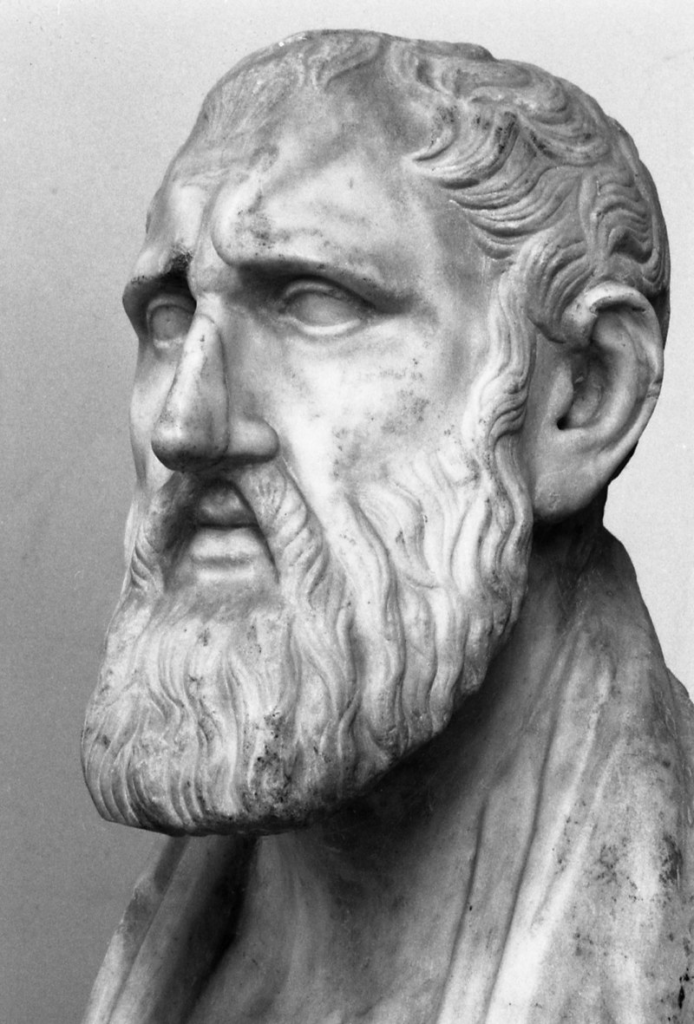
Above: Bust of Greek philosopher Zeno of Citium (334 – 262 BC), Farnese Collection, Napoli, Italia
(Zeno of Citium was a Hellenistic philosopher from Citium (Kition), Cyprus.
He was the founder of the Stoic school of philosophy, which he taught in Athens from about 300 BC.
Based on the moral ideas of the Cynics, Stoicism laid great emphasis on goodness and peace of mind gained from living a life of virtue in accordance with nature.
It proved very popular and flourished as one of the major schools of philosophy from the Hellenistic period through to the Roman era.
It enjoyed revivals in the Renaissance as Neostoicism and in the current era as Modern Stoicism.
Most of the details known about his life come from the biography and anecdotes preserved by Diogenes Laërtius in his Lives and Opinions of Eminent Philosophers written in the 3rd century, a few of which are confirmed by the Suda (a 10th-century Byzantine encyclopedia).
Diogenes reports that Zeno’s interest in philosophy began when:
“He consulted the Oracle to know what he should do to attain the best life.
The gods’ response was that he should take on the complexion of the dead.
Whereupon, perceiving what this meant, he studied ancient authors.”
Zeno became a wealthy merchant.
On a voyage from Phoenicia to Peiraeus he survived a shipwreck, after which he went to Athens and visited a bookseller.
There he encountered Xenophon’s Memorabilia.
He was so pleased with the book’s portrayal of Socrates that he asked the bookseller where men like Socrates were to be found.
Just then, Crates of Thebes – the most famous Cynic living at that time in Greece – happened to be walking by.
The bookseller pointed to him.
Zeno is described as a haggard, dark-skinned person, living a spare, ascetic life despite his wealth.
This coincides with the influences of Cynic teaching, and was, at least in part, continued in his Stoic philosophy.
From the day Zeno became Crates’ pupil, he showed a strong bent for philosophy, though with too much native modesty to assimilate Cynic shamelessness.
Hence Crates, desirous of curing this defect in him, gave him a potful of lentil soup to carry through the Ceramicus (the pottery district).
When he saw that Zeno was ashamed and tried to keep it out of sight, Crates broke the pot with a blow of his staff.
As Zeno began to run off in embarrassment with the lentil soup flowing down his legs, Crates chided:
“Why run away, my little Phoenician?
Nothing terrible has befallen you.“
Zeno began teaching in the colonnade in the Agora of Athens known as the Stoa Poikile in 301 BC.
His disciples were initially called “Zenonians” but eventually they came to be known as “Stoics” a name previously applied to poets who congregated in the Stoa Poikile.
Among the admirers of Zeno was King Antigonus II Gonatas of Macedonia, who, whenever he came to Athens, would visit Zeno.
Zeno is said to have declined an invitation to visit Antigonus in Macedonia, although their supposed correspondence preserved by Laërtius is undoubtedly the invention of a later writer.
Zeno instead sent his friend and disciple Persaeus, who had lived with Zeno in his house.
Zeno is said to have declined Athenian citizenship when it was offered to him, fearing that he would appear unfaithful to his native land, where he was highly esteemed, and where he contributed to the restoration of its baths, after which his name was inscribed upon a pillar there as “Zeno the philosopher“.
We are also told that Zeno was of an earnest, gloomy disposition, that he preferred the company of the few to the many, that he was fond of burying himself in investigations and that he disliked verbose and elaborate speeches.
Diogenes Laërtius has preserved many clever and witty remarks by Zeno, although these anecdotes are generally considered unreliable.
Zeno died around 262 BC.
Laërtius reports about his death:
As he was leaving the school he tripped and fell, breaking his toe.
Striking the ground with his fist, he quoted the line from the Niobe:
I come, I come, why dost thou call for me?“
He died on the spot through holding his breath.”
At Zeno’s funeral an epitaph was composed for him stating:
And if thy native country was Phoenicia,
What need to slight thee?
Came not Cadmus thence,
Who gave to Greece her books and art of writing?“
This signified that even though Zeno was of non-Greek background the Greeks still respected him, comparing him to the legendary Phoenician hero Cadmus who had brought the alphabet to the Greeks, as Zeno had brought Stoicism to them and was described as “the noblest man of his age” with a bronze statue being built in his honour.
During his lifetime, Zeno received appreciation for his philosophical and pedagogical teachings.
Among other things, Zeno was honored with a golden crown.
A tomb was built in honour of his moral influence on the youth of his era.
The crater Zeno on the Moon is named in his honour.

Above: Zeno Crater, The Moon
Zeno divided philosophy into three parts:
- Logic (a wide subject including rhetoric, grammar, and the theories of perception and thought)
- Physics (not just science, but the divine nature of the Universe as well)
- Ethics, the end goal of which was to achieve eudaimonia (happiness) through the right way of living according to Nature
Zeno urged the need to lay down a basis for logic because the wise person must know how to avoid deception.
Zeno divided true conceptions into the comprehensible and the incomprehensible, permitting for free will the power of assent in distinguishing between sense impressions.
Zeno said that there were four stages in the process leading to true knowledge, which he illustrated with the example of the flat, extended hand, and the gradual closing of the fist:
Zeno stretched out his fingers, and showed the palm of his hand.
“Perception is a thing like this.“
Then, when he had closed his fingers a little:
“Assent is like this.”
Afterwards, when he had completely closed his hand, and showed his fist, that, he said, was Comprehension.
From which simile he also gave that state a new name, calling it katalepsis.
But when he brought his left hand against his right, and with it took a firm and tight hold of his fist:
Knowledge was of that character.
And that was what none but a wise person possessed.”
The Universe, in Zeno’s view, is God:
A divine reasoning entity, where all the parts belong to the whole.
Into this pantheistic system he incorporated the physics of Heraclitus.
The Universe contains a divine artisan-fire, which foresees everything, and extending throughout the universe, must produce everything:
Zeno, then, defines nature by saying that it is artistically working fire, which advances by fixed methods to creation.
For he maintains that it is the main function of art to create and produce and that what the hand accomplishes in the productions of the arts we employ, is accomplished much more artistically by nature, that is, as I said, by artistically working fire, which is the master of the other arts.”
This divine fire (aether) is the basis for all activity in the Universe, operating on otherwise passive matter, which neither increases nor diminishes itself.
The primary substance in the Universe comes from fire, passes through the stage of air, and then becomes water:
The thicker portion becoming earth, and the thinner portion becoming air again, and then rarefying back into fire.
Individual souls are part of the same fire as the world-soul of the Universe.
Following Heraclitus, Zeno adopted the view that the Universe underwent regular cycles of formation and destruction.
The nature of the Universe is such that it accomplishes what is right and prevents the opposite, and is identified with unconditional Fate, while allowing it the free will attributed to it.
According to Zeno’s beliefs, “true happiness” can only be found by obeying natural laws and living in tune with the course of Fate.
Zeno recognised a single, sole and simple good, which is the only goal to strive for.
“Happiness is a good flow of life and this can only be achieved through the use of right reason coinciding with the universal reason, which governs everything.
A bad feeling is a disturbance of the mind repugnant to reason, and against Nature.”
This consistency of soul, out of which morally good actions spring, is virtue.
True good can only consist in virtue.
Things that are morally indifferent can nevertheless have value.
Things have a relative value in proportion to how they aid the natural instinct for self-preservation.
That which is to be preferred is a “fitting action“, a designation Zeno first introduced.
Self-preservation, and the things that contribute towards it, has only a conditional value.
It does not aid happiness, which depends only on moral actions.
Just as virtue can only exist within the dominion of reason, so vice can only exist with the rejection of reason.
Virtue is absolutely opposed to vice, the two cannot exist in the same thing together, and cannot be increased or decreased.
No one moral action is more virtuous than another.
All actions are either good or bad, since impulses and desires rest upon free consent.
Hence even passive mental states or emotions that are not guided by reason are immoral and produce immoral actions.
Zeno distinguished four negative emotions: desire, fear, pleasure and sorrow.
He was probably responsible for distinguishing the three corresponding positive emotions: will, caution, and joy, with no corresponding rational equivalent for pain.
All errors must be rooted out, not merely set aside, and replaced with right reason.)

Above: Zeno, portrayed as a medieval scholar in the Nuremberg Chronicle (1493)
No authenticated writings of Diogenes survive, but there are some details of his life from anecdotes (chreia), especially from Diogenes Laërtius’ book Lives and Opinions of Eminent Philosophers and other sources.

Diogenes made a virtue of poverty.
He begged for a living and often slept in a large ceramic jar (pithos) in the marketplace.
He used his simple lifestyle and behavior to criticize the social values and institutions of what he saw as a corrupt confused society.
He had a reputation for sleeping and eating wherever he chose in a highly non-traditional fashion and took to toughening himself against nature.
The stories told of Diogenes illustrate the logical consistency of his character.
He inured himself to the weather by living in a clay wine jar belonging to the Temple of Cybele.
He destroyed the single wooden bowl he possessed on seeing a peasant boy drink from the hollow of his hands.
He then exclaimed:
“Fool that I am, to have been carrying superfluous baggage all this time!”
It was contrary to Athenian customs to eat within the marketplace, and still he would eat there, for, as he explained when rebuked, it was during the time he was in the marketplace that he felt hungry.

Above: Diogenes Sitting in His Tub, Jean-Léon Gérôme (1860)
(Diogenes is seated in his abode, the earthenware tub, in the Metroon, Athens, lighting the lamp in daylight with which he was to search for an honest man.
(He used to stroll about in full daylight with a lamp.
When asked what he was doing, he would answer:
“I am looking for a man.”
Modern sources often say that Diogenes was looking for an “honest man“, but in ancient sources he is simply “looking for a man“.
This has been interpreted to mean that, in his view, the unreasoning behavior of the people around him meant that they did not qualify as men.
Diogenes looked for a man but reputedly found nothing but rascals and scoundrels.)

Above: Diogenes searching for a Man, G. B. Castiglione (1655), Prado Museum, Madrid, España
His companions were dogs that also served as emblems of his Cynic (“dog-like“) philosophy, which emphasized an austere existence.)
Diogenes declared himself a cosmopolitan and a citizen of the world rather than claiming allegiance to just one place.
He modelled himself on the example of Heracles, believing that virtue was better revealed in action than in theory.

Above: Statue of Greek mythological hero Herakles at rest carrying fruit in his right hand
Diogenes became notorious for his philosophical stunts, such as carrying a lamp during the day, claiming to be looking for an honest man, as he viewed the people around him as dishonest and irrational.
Diogenes taught by living example.
He tried to demonstrate that wisdom and happiness belong to the man who is independent of society and that civilization is regressive.
He scorned not only family and socio-political organization, but also property rights and reputation.
He even rejected traditional ideas about human decency.
In addition to eating in the marketplace, Diogenes is said to have urinated on some people who insulted him, defecated in the theatre, masturbated in public, and pointed at people with his middle finger, which was considered insulting.
Diogenes Laërtius also relates that Diogenes would spit and fart in public.
When asked about his eating in public Diogenes said:
“If taking breakfast is nothing out of place, then it is nothing out of place in the marketplace.”
On the indecency of his masturbating in public he would say:
“If only it were as easy to banish hunger by rubbing my belly.“

Above: Diogenes, Jules Bastien-Lepage (1873)
Diogenes criticized Plato (427 – 328 BC), disputed his interpretation of Socrates (470 – 399 BC) and sabotaged his lectures, sometimes distracting listeners by bringing food and eating during the discussions.
Diogenes had nothing but disdain for Plato and his abstract philosophy.
Diogenes viewed Antisthenes as the true heir to Socrates, and shared his love of virtue and indifference to wealth, together with a disdain for general opinion.
Diogenes shared Socrates’s belief that he could function as a doctor to men’s souls and improve them morally, while at the same time holding contempt for their obtuseness.
Plato once described Diogenes as “a Socrates gone mad“.
According to Diogenes Laërtius, when Plato gave the tongue-in-cheek definition of man as “featherless bipeds“, Diogenes plucked a chicken and brought it into Plato’s Academy, saying, “Here is Plato’s man.”, and so the Academy added “with broad flat nails” to the definition.

Above: Plato and Diogenes, Mattia Preti (1649)
According to a story which seems to have originated with Menippus of Gadara, Diogenes was captured by pirates while on voyage to Aegina and sold as a slave in Crete to a Corinthian named Xeniades.
Being asked his trade, he replied that he knew no trade but that of governing men, and that he wished to be sold to a man who needed a master.
Xeniades liked his spirit and hired Diogenes to tutor his children.
As tutor to Xeniades’s two sons, it is said that he lived in Corinth for the rest of his life, which he devoted to preaching the doctrines of virtuous self-control.
There are many stories about what actually happened to him after his time with Xeniades’s two sons.
There are stories stating he was set free after he became “a cherished member of the household“, while one says he was set free almost immediately, and still another states that “he grew old and died at Xeniades’s house in Corinth“.
He is even said to have lectured to large audiences at the Isthmian Games.
Although most of the stories about his living in a jar are located in Athens, Lucian recounts a tale where he lived in a jar near the gymnasium in Corinth.
Diogenes was also noted for having mocked Alexander the Great, both in public and to his face when he visited Corinth in 336 BC.
According to legend, Alexander the Great came to visit the philosopher Diogenes of Sinope.
Alexander wanted to fulfill a wish for Diogenes and asked him what he desired.
As told by Diogenes Laërtius, Diogenes replied: “Stand out of my light.“
Plutarch provides a longer version of the story, which begins after Alexander arrives in Corinth:
Thereupon many statesmen and philosophers came to Alexander with their congratulations, and he expected that Diogenes of Sinope also, who was tarrying in Corinth, would do likewise.
But since that philosopher took not the slightest notice of Alexander, and continued to enjoy his leisure in the suburb Craneion, Alexander went in person to see him, and he found him lying in the sun.
Diogenes raised himself up a little when he saw so many people coming towards him, and fixed his eyes upon Alexander.
And when that monarch addressed him with greetings, and asked if he wanted anything:
“Yes, stand a little out of my sun.“
Alexander was so struck by this and admired so much the haughtiness and grandeur of the man who had nothing but scorn for him, that he said to his followers, who were laughing and jesting about the philosopher as they went away:
“But truly, if I were not Alexander, I wish I were Diogenes.“”
In another account of the conversation, Alexander found the philosopher looking attentively at a pile of human bones.
Diogenes explained:
“I am searching for the bones of your father but cannot distinguish them from those of a slave.“

Above: Mosaic of Alexander the Great (356 – 323 BC), House of the Faun, Pompeii, Italia
There are conflicting accounts of Diogenes’s death.
His contemporaries alleged that he held his breath until he died, although other accounts of his death say he became ill from eating raw octopus or from an infected dog bite.
When asked how he wished to be buried, he left instructions to be thrown outside the city wall so that wild animals could feast on his body.
When asked if he minded this, he said:
“Not at all, as long as you provide me with a stick to chase the creatures away!”
When asked how he could use the stick since he would lack awareness, he replied:
“If I lack awareness, then why should I care what happens to me when I am dead?“
To the end, Diogenes made fun of people’s excessive concern with the “proper” treatment of the dead.
The Corinthians erected to his memory a pillar on which rested a dog of Parian marble.
It was alleged by Plutarch and Diogenes Laërtius that both Diogenes and Alexander died on the same day.
However, the actual death date of neither man can be verified.
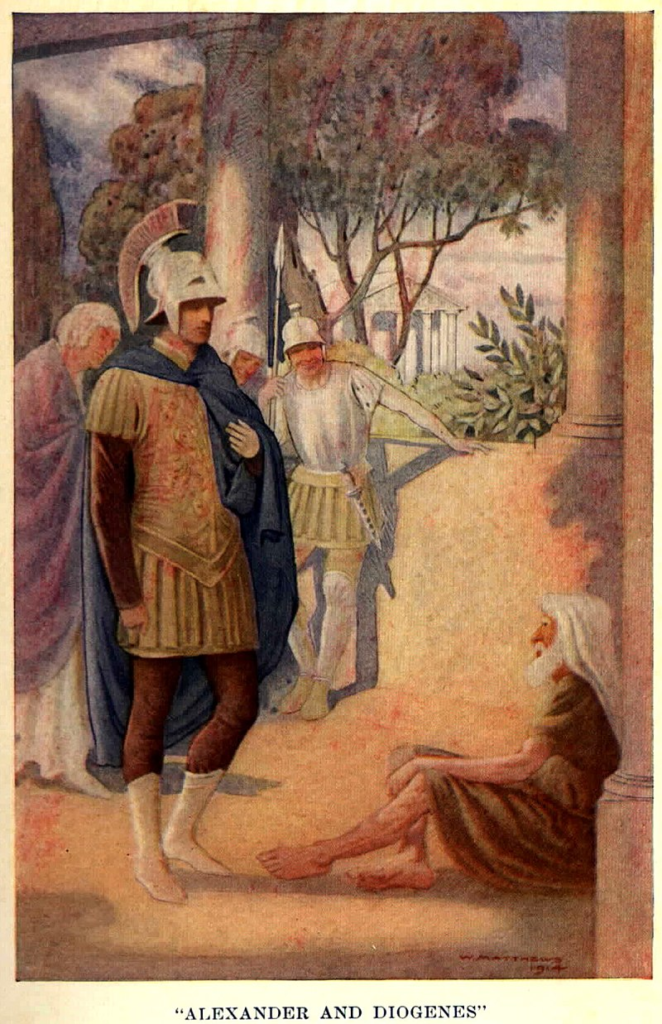
Along with Antisthenes and Crates of Thebes, Diogenes is considered one of the founders of Cynicism.
The ideas of Diogenes, like those of most other Cynics, must be arrived at indirectly.
Fifty-one writings of Diogenes survive as part of the spurious Cynic Epistles, though he is reported to have authored over ten books and seven tragedies that do not survive.
Cynic ideas are inseparable from Cynic practice.
Therefore what is known about Diogenes is contained in anecdotes concerning his life and sayings attributed to him in a number of scattered classical sources.

Above: Mosaic of Diogenes, Roman villa, Römisch-Germanisches Museum, Köln (Cologne), Deutschland (Germany)
Many anecdotes of Diogenes refer to his dog-like behavior and his praise of a dog’s virtues.
It is not known whether Diogenes was insulted with the epithet “doggish” and made a virtue of it, or whether he first took up the dog theme himself.
When asked why he was called a dog he replied:
“I fawn on those who give me anything, I yelp at those who refuse, and I set my teeth in rascals.”
One explanation offered in ancient times for why the Cynics were called dogs was that Antisthenes taught in the Cynosarges gymnasium at Athens.
The word Cynosarges means the place of the white dog.
Later Cynics also sought to turn the word to their advantage, as a later commentator explained:
There are four reasons why the Cynics are so named.
First because of the indifference of their way of life, for they make a cult of indifference and, like dogs, eat and make love in public, go barefoot, and sleep in tubs and at crossroads.
The second reason is that the dog is a shameless animal, and they make a cult of shamelessness, not as being beneath modesty, but as superior to it.
The third reason is that the dog is a good guard, and they guard the tenets of their philosophy.
The fourth reason is that the dog is a discriminating animal which can distinguish between its friends and enemies.
So do they recognize as friends those who are suited to philosophy, and receive them kindly, while those unfitted they drive away, like dogs, by barking at them.”
Diogenes believed human beings live hypocritically and would do well to study the dog.
Besides performing natural body functions in public with ease, a dog will eat anything and makes no fuss about where to sleep.
Dogs live in the present and have no use for pretentious philosophy.
They know instinctively who is friend and who is foe.
Diogenes stated that “other dogs bite their enemies, I bite my friends to save them“.
Diogenes maintained that all the artificial growths of society were incompatible with happiness and that morality implies a return to the simplicity of nature.
So great was his austerity and simplicity that the Stoics would later claim him to be a wise man or “sophos“.
In his words:
“Humans have complicated every simple gift of the gods.”
Although Socrates had previously identified himself as belonging to the world, rather than a city, Diogenes is credited with the first known use of the word “cosmopolitan“.
When he was asked from where he came, he replied:
“I am a citizen of the world (cosmopolites)”.
This was a radical claim in a world where a man’s identity was intimately tied to his citizenship of a particular city-state.
As an exile and an outcast, a man with no social identity, Diogenes made a mark on his contemporaries.
Diogenes’s name has been applied to a behavioural disorder characterised by apparently involuntary self-neglect and hoarding.
The disorder afflicts the elderly and is quite inappropriately named, as Diogenes deliberately rejected common standards of material comfort, and was anything but a hoarder.

Jerome Klapka Jerome was an English writer and humorist, best known for the comic travelogue Three Men in a Boat (1889).
Other works include the essay collections Idle Thoughts of an Idle Fellow (1886) and Second Thoughts of an Idle Fellow (1898), Three Men on the Bummel (1900), a sequel to Three Men in a Boat, and several other novels.

Above: English writer Jerome K. Jerome (1859 – 1927)
Jerome was born in Walsall, England, and, although he was able to attend grammar school, his family suffered from poverty at times, as did he as a young man trying to earn a living in various occupations.
In his 20s, he was able to publish some work.
Success followed.
He married in 1888.

Above: Images of Walsall, England
The honeymoon was spent on a boat on the Thames.

Above: Course of the River Thames, England
He published Three Men in a Boat soon afterwards.
He continued to write fiction, non-fiction and plays over the next few decades, though never with the same level of success.

Three Men in a Boat (To Say Nothing of the Dog), published in 1889, is a humorous novel by English writer Jerome K. Jerome describing a two-week boating holiday on the Thames from Kingston upon Thames to Oxford and back to Kingston.
The book was initially intended to be a serious travel guide, with accounts of local history along the route, but the humorous elements took over to the point where the serious and somewhat sentimental passages seem a distraction to the comic novel.
One of the most praised things about Three Men in a Boat is how undated it appears to modern readers – the jokes have been praised as fresh and witty.
The three men are based on Jerome himself (the narrator Jerome K. Jerome) and two real-life friends, George Wingrave (who would become a senior manager at Barclays Bank) and Carl Hentschel (the founder of a London printing business, called Harris in the book), with whom Jerome often took boating trips.
The dog, Montmorency, is entirely fictional but, “as Jerome admits, developed out of that area of inner consciousness which, in all Englishmen, contains an element of the dog“.

(Perhaps one day I should get myself a dog and name it Diogenes.
He would keep me honest.)

Above: Fox terrier much like Montmorency in Three Men in a Boat
The trip is a typical boating holiday of the time in a Thames camping skiff.

Following the overwhelming success of Three Men in a Boat, Jerome later published a sequel, about a cycling tour in Germany, titled Three Men on the Bummel (also known as Three Men on Wheels) (1900).

The story begins by introducing George, Harris, Jerome (always referred to as “J.“), and Jerome’s dog, Montmorency.
The men are spending an evening in J.’s room, smoking and discussing illnesses from which they fancy they suffer.
They conclude that they are all suffering from “overwork” and need a holiday.
A stay in the country and a sea trip are both considered.
The country stay is rejected because Harris claims that it would be dull, and the sea-trip after J. describes bad experiences his brother-in-law and a friend had on previous sea-trips.
The three eventually decide on a boating holiday up the River Thames, from Kingston upon Thames to Oxford, during which they will camp, notwithstanding more of J.’s anecdotes about previous mishaps with tents and camping stoves.

Above: River Isis (Thames), Oxford, England
They set off the following Saturday.
George must go to work that morning, so J. and Harris make their way to Kingston by train.

Above: Kingston Bridge, London, England
They cannot find the right train at Waterloo Station (the station’s confusing layout was a well-known theme of Victorian comedy) so they bribe a train driver to take his train to Kingston, where they collect the hired boat and start the journey.

Above: Aerial view of Waterloo Station, London, England
They meet George further up-river at Weybridge.

Above: Old Bridge, River Wey, Weybridge, Surrey, England
The remainder of the story describes their river journey and the incidents that occur.
The book’s original purpose as a guidebook is apparent as J., the narrator, describes passing landmarks and villages such as Hampton Court Palace, Hampton Church, Magna Carta Island and Monkey Island, and muses on historical associations of these places.
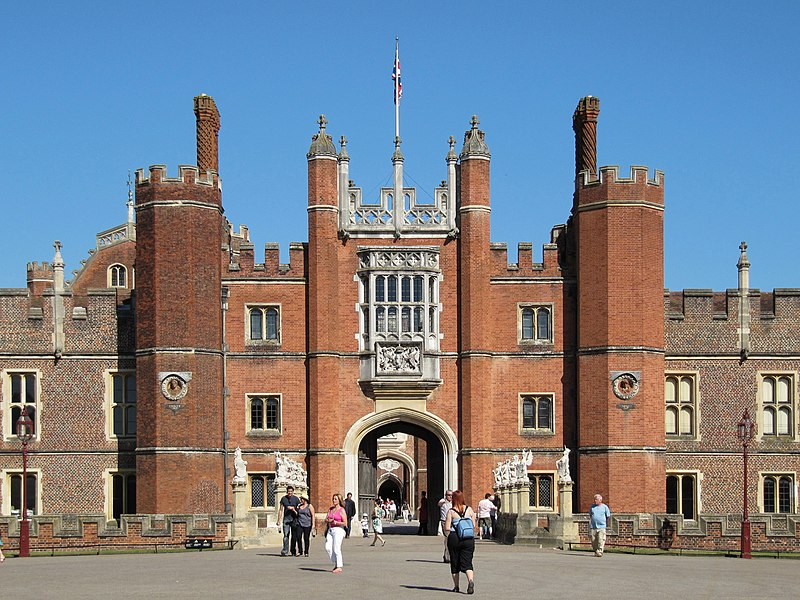
Above: Great Gate, Hampton Court Palace, Richmond upon Thames, England

Above: St Mary’s Parish Church, Hampton, Richmond upon Thames, England

Above: Magna Carta Island, Runnymede, Berkshire, England

Above: Monkey Island Hotel, Bray, Berkshire, England
However, he frequently digresses into humorous anecdotes that range from the unreliability of barometers for weather forecasting to the difficulties encountered when learning to play the Scottish bagpipes.

Above: Barometer

The most frequent topics of J.’s anecdotes are river pastimes such as fishing and boating and the difficulties they present to the inexperienced and unwary and to the three men on previous boating trips.

The book includes classic comedy set pieces, such as the Plaster of Paris trout in chapter 17…

… and the “Irish stew” in chapter 14 – made by mixing most of the leftovers in the party’s food hamper:
I forget the other ingredients, but I know nothing was wasted.
And I remember that, towards the end, Montmorency, who had evinced great interest in the proceedings throughout, strolled away with an earnest and thoughtful air, reappearing, a few minutes afterwards, with a dead water-rat in his mouth, which he evidently wished to present as his contribution to the dinner.
Whether in a sarcastic spirit, or with a genuine desire to assist, I cannot say.
We had a discussion as to whether the rat should go in or not.
Harris said that he thought it would be all right, mixed up with the other things, and that every little helped, but George stood up for precedent.
He said he had never heard of water-rats in Irish stew, and he would rather be on the safe side, and not try experiments.”

The reception by critics varied between lukewarm and hostile.
The use of slang was condemned as “vulgar” and the book was derided as written to appeal to “‘Arrys and ‘Arriets” – then common sneering terms for working-class Londoners who dropped their Hs when speaking.
Punch magazine dubbed Jerome “‘Arry K. ‘Arry“.

Modern commentators have praised the humour, but criticised the book’s unevenness, as the humorous sections are interspersed with more serious passages written in a sentimental, sometimes purple, style.
Yet the book sold in huge numbers.

“I pay Jerome so much in royalties“, the publisher told a friend.
“I cannot imagine what becomes of all the copies of that book I issue.
I often think the public must eat them.”
The first edition was published in August 1889 and serialised in the magazine Home Chimes in the same year.
The first edition remained in print from 1889 until March 1909, when the second edition was issued.
During that time, 202,000 copies were sold.
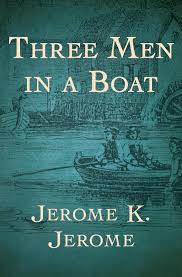
In his introduction to the 1909 second edition, Jerome states that he had been told another million copies had been sold in America by pirate printers.
The book was translated into many languages.
The Russian edition was particularly successful and became a standard school textbook.
Jerome later complained in a letter to The Times of Russian books not written by him, published under his name to benefit from his success.
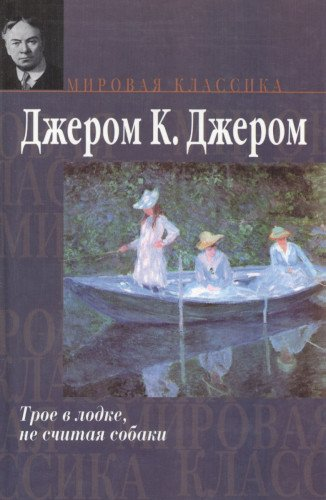
Since its publication, Three Men in a Boat has never been out of print.
It continues to be popular, with The Guardian listing it as one of The 100 Greatest Novels of All Time in 2003 and 2015.
Esquire included it in the 50 Funniest Books Ever in 2009.
In 2003, the book was #101 in the BBC’s list of “the nation’s favourite novels” for The Big Read.

The river trip is easy to recreate, following the detailed description, and this is sometimes done by fans of the book.
Much of the route remains unchanged.
For example, all the pubs and inns named are still open, with the exception of The Crown in Marlow, which closed in 2008.
This blogpost is NOT about a recreation of the river trip.

I like Three Men in a Boat, because there is much within its depiction of human nature – mine in particular – that appeals to me and is reflected in my experience of España’s El Torcal.

“There were four of us – George, William Samuel Harris, myself and Montmorency.
We were sitting in my room, smoking and talking about how bad we were – bad from a medical point of view I mean, of course.
We were all feeling seedy and we were getting nervous about it.“

Discussions of feeling seedy and the resulting nervousness about this were the background music of my childhood, for my foster mother, the late great (my first true She Who Must Be Obeyed female figure in my life – a title which my bride has certainly earned) Doris Evelyn O’Brien was constantly living the lyrics of Kenny Rogers’ “Just Dropped In to See What Condition My Condition Was In“:

Yeah, yeah, whoa-oh, yeah
What condition my condition was in
I woke up this mornin’ with the sundown shinin’ in
I found my mind in a brown paper bag within
I tripped on a cloud and fell an eight miles high
I tore my mind on a jagged sky
I just dropped in to see what condition my condition was in

Above: “The Dude” / Jeff Lebowski (Jeff Bridges), The Big Lebowski (1998)
Yeah, yeah, oh, yeah
What condition my condition was in
I pushed my soul in a deep dark hole, and then I followed it in
I watched myself crawlin’ out as I was crawlin’ in, yeah, yeah
I got up so tight, I couldn’t unwind, I saw so much, I broke my mind
I just dropped in to see what condition my condition was in

Above: “The Dude” / Jeff Lebowski (Jeff Bridges), The Big Lebowski (1998)
Yeah, yeah, oh, yeah
What condition my condition was in
Someone painted “April fool” in big black letters on a dead end sign
I had my foot on the gas as I left the road, blew out my mind
Eight miles outta Memphis and I got no spare
Eight miles straight up downtown somewhere
I just dropped in to see what condition my condition was in
I said I just dropped in to see what condition my condition was in
Yeah, yeah, whoa-oh, yeah
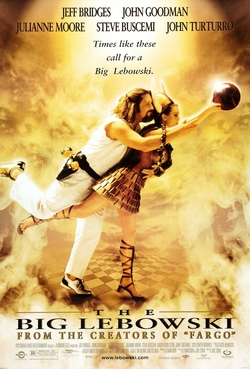
The lyrics aforementioned are not suggestive that the first She was psychedelic in either practice or character, but rather I wish to convey merely that She was ever alert like the Three Men of Jerome’s book of somehow acting as if She were invalid and suffering or at least on the cusp of said situation.
She subscribed to quack medical magazines and implored me to bring home from the school library any piece of literature regarding health and the inevitable illness just about to pounce on her person.
Like the Three Men, She modified the phrase “Physician, heal thyself” to be interpreted as “Diagnose thyself and no medical degrees be damned“.
I did not know at the time that Doris’ delicate dilemma and deathly dire doom and destiny was not unique to her.

My foster cousin and one of my oldest friends and truly my favourite SOB (the initials of Steve O’Brien) is ever wary of illness and injury.
A sports fanatic, a fine athlete, a good man and a motivational model, I have secretly (at least, a secret until this moment) named him “Sports Jesus“, for, like all religious zealots, my favourite SOB is not content with just being a true believer himself but has an overwhelming zeal to convert anyone and everyone caught in the strands of his conversation to rush out and get fit as a preventive against the punishments of the wear and tear of human existence.

Above: The man, the legend, the SOB
A fine and noble desire to be sure, but nothing compels me to flee from Sinope more speedily than someone determined to change my dastardly ways.
We have made an unspoken pact.
Let him be fit.
Let me be fat.
Live and let live.
Eventually, live and let die.
He will, that SOB, probably outlive me, though he is 360 days my elder, but nonetheless I intend to prove him wrong, if, for no other reason, to be annoying.
I will do absolutely nothing to deliberately change my condition and yet somehow I will carry on.
Success is the best revenge.

Above: Canadian athlete Steve O’Brien
Unlike the Three Men, I do not smoke.
But like the Three Men, I should be more active than I actually am.
I am 59 and the mileage of this mortal machine has become more evident as I age.
Aches advertise themselves.
Bones crack and creak.
Injuries are remembered in the rheumatism of rain.
Illness needs no invitation to invade.
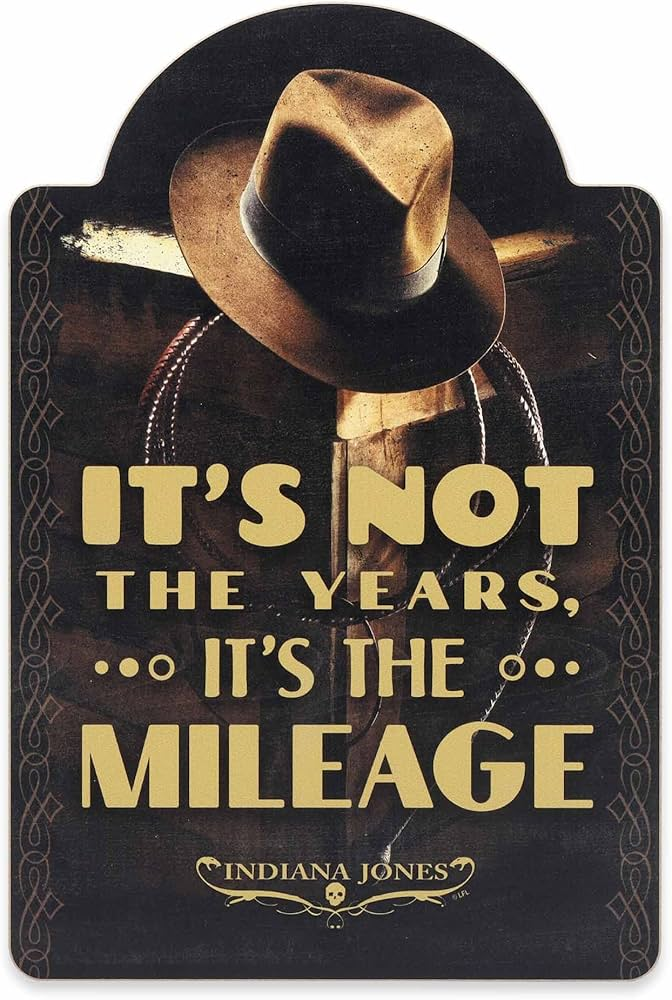
Of course, I would marry a maiden made in the mould of Doris.
I married a doctor.
A German, no less.
And as any survivor of a relationship with a fair Frau of Teutonic temperament will attest, it is the duty of each damsel of Deutschland to remind her man of his deficiencies.
Sadly, my deficiencies are diverse and easily defined.
Behind every successful husband is a wife shaking her head in shocked disbelief.

As I dealt with Doris and as I have sparred with Steve, I take the well-deserved taunts and torments of my temptress in stride and do as I will.
There should be some freedom in being an individual.
If she cannot accept me as I am (or what remains of me) then she is not bound to remain with me.
She can do better.
But, caveat emptor, she could also do much worse than the wastrel she wedded.
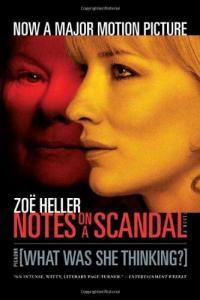
“Harris said he felt such extraordinary fits of giddiness come over him at times, that he hardly knew what he was doing.
And then George said that he had fits of giddiness too and hardly knew what he was doing.“

Now whether Jerome meant giddiness in the manner of dizziness or folly, I am not certain.
Dizziness, I have had.
I am slightly anemic.
More iron needed in my blood.
Less chicken, more steak in my diet, I suppose.
Am I other definitions like “feather-brained” and “flighty“?
Perhaps the possible title of a future autobiography.
When folks ask me why I chose to come to Türkiye, I can only hint at having Harris’ hardship.

“With me, it was my liver that was out of order.
I knew that was out of order, because I had just been reading a patent liver pill circular in which were detailed the various symptoms by which a man could tell when his liver was out of order.
I had them all.
It is a most extraordinary thing, but I never read a patent medicine advertisement without being impelled to the conclusion that I am suffering from the particular disease therein dealt with in its most virulent form.
The diagnosis seems in every case to correspond exactly with all the sensations that I have ever felt.

I remember going to the British Museum one day to read up the treatment for some slight ailment of which I had a touch – hay fever, I fancy it was.
I got down the book and read all I came to read. And then, in an unthinking moment, I idly turned the leaves and began to indolently study diseases, generally.
I forget which was the first distemper I plunged into – some fearful devastating scourge, I know – and, before I had glanced half down the list of “premonitory symptoms“, it was borne in upon me that I had fairly got it.
I sat for awhile, frozen with horror.
And then, in the listlessness of despair, I again turned over the pages.

Above: Aerial view of the British Museum, London, England
I came to typhoid fever.
Must have had it for months without knowing it.
Wondered what else I had got.

Above: Signs and symptoms of typhoid fever – an infection caused by bacteria
Turned up St. Vitus’ Dance.
Found, as I expected, that I had that too.

Above: St. Vitus (290 – 303), Nuremberg Chronicle (1493)
(According to his legend, he died during the Diocletianic Persecution in 303.
In Germany, his feast was celebrated with dancing before his statue.
This dancing became popular and the name “Saint Vitus Dance” was given to the neurological disorder Sydenham’s chorea.
It also led to Vitus being considered the patron saint of dancers and of entertainers in general.
Sydenham’s chorea, also known as rheumatic chorea, is a disorder characterized by rapid, uncoordinated jerking movements primarily affecting the face, hands and feet.)
Began to get interested in my case and determined to sift it to the bottom and so started alphabetically.
Read up ague and learnt that I was sickening for it and that the acute stage would commence in about another fortnight.
(Ague or malaria is a mosquito-borne infectious disease.)

Bright’s disease, I was relieved to find, I had only in a modified form, and, so far that was concerned, I might live for years.
(Bright’s disease is a kidney diseases characterized by swelling and the presence of albumin in the urine, frequently accompanied by high blood pressure and heart disease.)

Above: English physician Richard Bright (1789 – 1858)
Cholera I had, with severe complications.
(Cholera is a bacterial infection of the small intestine.
Symptoms may range from none, to mild, to severe.
The classic symptom is large amounts of watery diarrhea (the colour and consistency of rice water) lasting a few days.
Vomiting and muscle cramps may also occur.
Diarrhea can be so severe that it leads within hours to severe dehydration and electrolyte imbalance.
This may result in sunken eyes, cold skin, decreased skin elasticity, and wrinkling of the hands and feet.
Dehydration can cause the skin to turn bluish.
Symptoms start two hours to five days after exposure.)

Above: Adult cholera patient with “washer woman’s hand” – Due to severe dehydration, cholera manifests itself in decreased skin turgor, which produces “washer woman’s hand“.
And diphtheria, I seemed to have been born with.
(Diphtheria is an infection.
Signs and symptoms may vary from mild to severe and usually start two to five days after exposure.
Symptoms often develop gradually, beginning with a sore throat and fever.
In severe cases, a grey or white patch develops in the throat, which can block the airway, and create a barking cough similar to what is observed in croup.
The neck may also swell, in part due to the enlargement of the facial lymph nodes.
Diphtheria can also involve the skin, eyes, or genitals, and can cause complications, including myocarditis (which in itself can result in an abnormal heart rate), inflammation of nerves (which can result in paralysis), kidney problems, and bleeding problems due to low levels of platelets.
Diagnosis can often be made based on the appearance of the throat with confirmation by microbiological culture.
In 2015, 4,500 cases were officially reported worldwide, down from nearly 100,000 in 1980.
About a million cases a year are believed to have occurred before the 1980s.
Diphtheria currently occurs most often in sub-Saharan Africa, South Asia and Indonesia.
In 2015, it resulted in 2,100 deaths, down from 8,000 deaths in 1990.
In areas where it is still common, children are most affected.
It is rare in the developed world due to widespread vaccination, but can re-emerge if vaccination rates decrease.
In the US, 57 cases were reported between 1980 and 2004.
Death occurs in 5% – 10% of those diagnosed.
The disease was first described in the 5th century BC by Hippocrates.
The bacterium was identified in 1882 by Edwin Klebs.)

Above: Bust of Greek physician Hippocrates (460 – 370 BC)
I plodded conscientiously through the 26 letters and the only malady I could conclude I had not got was housemaid’s knee.
I felt rather hurt about this at first.
It seemed somehow to be a sort of slight.
Why hadn’t I got housemaid’s knee?
Why this invidious reservation?
After a while, however, less grasping feelings prevailed.
I reflected that I had every other known malady in the pharmacology.
I grew less selfish and determined to do without housemaid’s knee.
Prepatellar bursitis (housemaid’s knee) is an inflammation of the prepatellar bursa at the front of the knee.
It is marked by swelling at the knee, which can be tender to the touch and which generally does not restrict the knee’s range of motion.
It can be extremely painful and disabling as long as the underlying condition persists.
Prepatellar bursitis is most commonly caused by trauma to the knee, either by a single acute instance or by chronic trauma over time.
As such, the condition commonly occurs among individuals whose professions require frequent kneeling.)

Above: Normal knee (left) and housemaid’s knee (right)
Gout, in its most malignant stage, it would appear, had seized me without my being aware of it.
(Gout is a form of inflammatory arthritis characterized by recurrent attacks of pain in a red, tender, hot, and swollen joint, caused by the deposition of needle-like crystals of uric acid known as monosodium urate crystals.
Pain typically comes on rapidly, reaching maximal intensity in less than 12 hours.
The joint at the base of the big toe is affected in about half of cases.
It may also result in kidney stones or kidney damage.
Gout is due to persistently elevated levels of uric acid (urate) in the blood.
This occurs from a combination of diet, other health problems, and genetic factors.
At high levels, uric acid crystallizes and the crystals deposit in joints, tendons, and surrounding tissues, resulting in an attack of gout.
Gout occurs more commonly in those who regularly drink beer or sugar-sweetened beverages, eat foods that are high in purines (such as liver, shellfish or anchovies) or are overweight.
Diagnosis of gout may be confirmed by the presence of crystals in the joint fluid or in a deposit outside the joint.
Gout affects about 1% – 2% of adults in the developed world at some point in their lives.
It has become more common in recent decades.
This is believed to be due to increasing risk factors in the population, such as metabolic syndrome, longer life expectancy, and changes in diet.
Older males are most commonly affected.
Gout was historically known as “the disease of kings” or “rich man’s disease“.
It has been recognized at least since the time of the ancient Egyptians.)
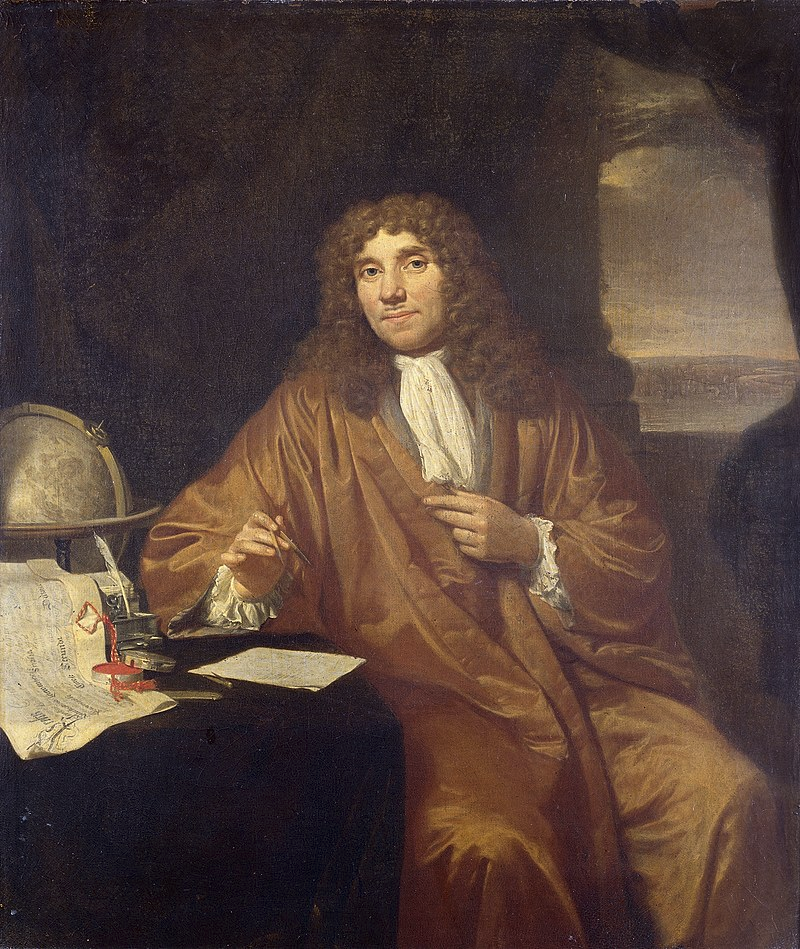
Above: Dutch microbiologist Anthonie van Leeuwenhoek (1632 – 1723) described the microscopic appearance of uric acid crystals in 1679.
Any zymosis I had evidently been suffering with from boyhood.
There were no more diseases after zymosis, so I concluded there was nothing else the matter with me.“
(Zymosis refers to fermentation, a metabolic process that produces chemical changes in organic substances through the action of enzymes.
In biochemistry, fermentation is narrowly defined as the extraction of energy from carbohydrates in the absence of oxygen, while in food production, it may more broadly refer to any process in which the activity of microorganisms brings about a desirable change to a foodstuff or beverage.
Whether zymosis should be classified as a disease remains unclear to me.)

Above: Fermentation in progress: carbon dioxide bubbles form a froth on top of the fermentation mixture
Personally, of all the aforementioned ailments all abridged and alphabetized, I have tried to avoid death.
After all, that kind of thing can kill a man.

“I sat and pondered.
I thought what an interesting case I must be from a medical point of view.
What an acquisition I should be to a class!
Students would have no need to “walk the hospitals“, if they had me.
I was a hospital in myself.
All they need do would be to walk round me and, after that, take their diploma.
Then I wondered how long I had to live.
I tried to examine myself.“

Above: David Tennant (the 10th Doctor), “Smith and Jones“, Doctor Who, 31 March 2007
Sometimes I do that several times a night, but not as publicly as Diogenes!

“I felt my pulse.
I could not at first feel any pulse at all.“

After all, what is the point of living if you don’t feel alive?


“Then, all of a sudden, it seemed to start off.
I pulled out my watch and timed it.
I made it 147 to the minute.
I tried to feel my heart.
I could not feel my heart.“

As proof, husbands are frequently accused of being heartless.

“It had stopped beating.“

Beaten, lost the beat, no longer marching to the beat, one of the Beatless Generation.

“I have since been induced to come to the opinion that it must have been there all the time and must have been beating, but I cannot account for it.
I patted myself all over, but I could not feel or hear anything.
I had walked into the Reading Room a happy healthy man.
I crawled out a decrepit wreck.”

Above: Reading Room, British Museum, London, England
Wednesday 12 June 2024
El Torcal de Antequera, España
Before heading east to our evening’s destination of Granada, we retrace our route back south, in the direction of Malaga, with the intention of visiting El Torcal de Antequera.

Above: El Torcal de Antequera
The skies are overcast.
The threat of rain hangs in the air.
This day we have already walked a fair distance in the heat of June of southern España.
Through the town of Antequera, up to the Alcazaba and out to the Dolmens, my feet ache and my knee complains.

Above: Antequera
Granted that our marriage is less a May – December affair (an age gap of decades) as it is an August – November romance (11 years’ difference between us), but there are moments where my body feels it cannot keep up with my younger bride.
Here and now is one example.

Above: French President Emmanuel Macron and his wife Brigitte – The couple married in 2007. At the time he was 30 years old and she 54, with a 24-year age gap between the pair.
El Torcal de Antequera is a nature reserve in the Sierra del Torcal mountain range located 2 km south of the city of Antequera, known for its unusual landforms and is regarded as one of the most impressive karst landscapes in Europe.
The area was designated a Natural Site of National Interest in July 1929, and a Natural Park Reserve of about 17 square kilometres was created in October 1978.
The Sierra del Torcal (or El Torcal) is a small mountain range separating the cities of Antequera and Málaga.
It has four geological sections: Sierra Pelada, Torcal Alto, Torcal Bajo, and Tajos and Laderas.
The highest point in El Torcal is Camorro de las Siete Mesas (1336 m) in the Torcal Alto.
The Jurassic age limestone is about 150 million years old and was laid down in a marine corridor that extended from the Gulf of Cádiz to Alicante between the present Atlantic Ocean and the Mediterranean Sea.
These seabeds were uplifted to an elevation of over 1,300 meters during the Tertiary era, resulting in a modest mountain range of flat-lying limestone, which is rare in Andalucia.
Later, a series of fractures, cracks and faults at right angles (generally NW-SE and NE-SW) were exploited by erosion and produced the alleys between large blocks of limestone visible today.
The blocks themselves have been subjected to both dissolution by water (karstification) and freeze-thaw splitting action which, working on the limestone’s horizontal beds, resulted in the various shapes visible today, many of which resemble, and have been named after, everyday objects such as the Sphinx, the Jug, the Camel, the Screw, etc.
Other flat surfaces have been karstified into rugged, rocky lands where travel on foot is difficult.
Like many massive limestones, the Torcal includes caves and other underground forms, some of them of historical importance like the Cueva del Toro (Cave of the Bull) with its Neolithic artifacts.
Their origins are also related to the dissolution of underground limestone by rainwater.

Above: El Torcal de Antequera
El Torcal supports an impressive array of wildflowers including rock-dwellers such as Linaria anticaria, Saxifraga biternata, Linaria oblongifolia, Viola demetria, Saxifraga reuterana, Polypodium australe, and other plants like lilies, red peonies, wild rose trees and 30 varieties of orchid.

Above: Welsh polypod ferns

Above: Red peonies
The many species of reptiles include the Montpellier snake and ocellated lizard.

Above: Montpelier snake

Above: Jewelled lizard
Other life includes the Griffon vulture, the Spanish ibex (Andalusian mountain goat), and nocturnal mammals such as badgers, weasels and rodents.

Above: Griffon vulture

Above: Spanish ibex

Above: European badger

Above: Weasel
El Torcal is accessible by paved road from the village of Villanueva de la Concepción.
A small gift shop and interpretive center at the parking area is the starting point for a short walk to an impressive viewpoint and three color-coded hiking trails of 1.5 km, 2.5 km and 4.5 km length which include many scenic viewpoints.
Because of temperature extremes, most visitation occurs in the spring and fall.

Above: El Torcal de Antequera
We are not, of course, like most visitors.
When I think of my relationship with my beloved bride there was no suspicion nor disapproval that her motives to marry me were anything monetary.
As aforementioned, she is a doctor and I am an ESL teacher.
Though a decade separates us chronologically it is not significantly large enough to generate any prejudice against our union.
That being said, it is days like today when I wonder whether our marriage can withstand the age gap as my age becomes more telling in my diminishing capacity.

As I age I find myself asking what we are both in the relationship for.
Are either of us in some sort of denial about the other’s motivation?
We live in an age where almost every person in the public eye has ironed away their wrinkles, botoxed their frowns and banished grey hair forever, fleeing from the first signs of ageing like a fox fleeing the hounds, that somehow they can escape the approach of death by denying the inevitable senescence of life.

“Old age has its pleasures, which, though different, are not less than the pleasures of youth.“
So said wise old Somerset Maugham, who enjoyed his latter years so much he clung on into his 90s.

Above: English writer William Somerset Maugham (1874 – 1965)
Most of us, especially the female of our species, cannot really see the appeal.
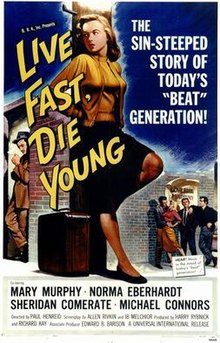
Some even go as far as advocating a James Dean style opt out – living fast and furious…

Above: American actor James Dean (1931 – 1955) died in a car crash, age 25.

… but quitting while you still able to “leave behind a good-looking corpse” as the character of Nick Romano put it in Willard Motley’s Knock on Any Door.

Knock on Any Door is a 1949 American courtroom trial film noir directed by Nicholas Ray and starring Humphrey Bogart.
The movie was based on the 1947 novel of the same name by Willard Motley.
The picture gave actor John Derek his breakthrough role as young hoodlum Nick Romano, whose motto was “Live fast, die young and have a good-looking corpse.”
Against the wishes of his law partners, slick talking lawyer Andrew Morton takes the case of Nick Romano, a troubled punk from the slums, partly because he himself came from the same slums and partly because he feels guilty for his partner botching the criminal trial of Nick’s father years earlier.
Nick is on trial for shooting a policeman point-blank and faces execution if convicted.
Nick’s history is presented through flashbacks showing him as a hoodlum committing one petty crime after another.
Morton’s wife Adele convinces him to play nursemaid to Nick in order to make Nick a better person.
Nick then robs Morton of $100 after a fishing trip.
Shortly after that, Nick marries Emma and tries to change his lifestyle.
He takes on job after job but keeps getting fired because of his recalcitrance.
He wastes his paycheck playing dice, wanting to buy Emma some jewelry, and then walks out on another job after punching his boss.
Feeling a lack of hope of ever being able to live a normal life, Nick decides to return to his old ways, sticking to his motto:
“Live fast, die young and have a good-looking corpse.“
He abandons Emma, even after she tells him that she is pregnant.
After Nick commits a botched hold-up at a train station, he returns to Emma so as to take her with him as he flees.
He finds that she had committed suicide by gas from an open oven door.
Morton’s strategy in the courtroom is to argue that slums breed criminals and that society is to blame for crimes committed by people who live in such miserable conditions.
Morton argues that Romano is a victim of society and not a natural-born killer.
However, his strategy does not have the desired effect on the jury, thanks to the badgering of the seasoned and experienced District Attorney Kerman, who delivers question after question until Nick shouts out his admission of guilt.
Morton, who is naive to believe in his client’s innocence, is shocked by Nick’s confession.
Nick decides to change his plea to guilty.
During the sentencing hearing, Morton manages to arouse some sympathy for the plight of those in a dead-end existence.
He pleads that anyone who “knocks on any door” may find a Nick Romano.
Nevertheless, Nick is sentenced to die in the electric chair.
Morton visits Nick prior to the execution and watches him walk down the hall to the death chamber.
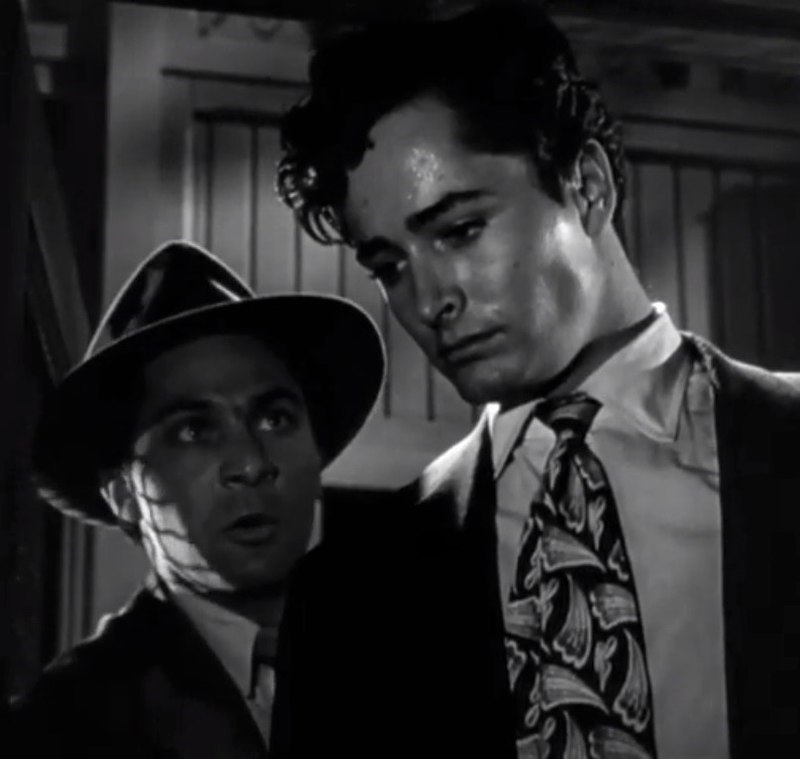
Above: Vito (Mickey Knox) and Nick Romano (John Derek), Knock on Any Door
The vast majority of us will let old age creep up.
Being alive, even when feeble, craggy and crabby, is generally preferable to being dead.

I am reminded of Judge Feathers in Jane Garden’s Old Filth.
Feathers is a supremely dignified and still strikingly handsome man with a powerful presence.
And despite the nickname of the title, he is also very clean – ostentaiously so.
His shoes shine.
His clothes are elegant.
But assumptions made about Feathers tend to be wide of the mark.
For secrets lurk in Feathers’ life.
Underneath, fuelled by the traumas of his past, is an entirely different man.
Beneath the surface, we discover a diorama of projected journeys, a host of people he plans to visit, dreams of redemptive rendezvous – and he is more than capable of making them happen.

Think about it.
When you are old, you won’t have to let the professional façade of your middle years stand in your way anymore.
Bend over.
Let me see you shake your tail, Feathers.

The elderly Mrs. Monro in The Skeleton in the Cupboard also casts old age in a refreshing light.
This sharp witty narrator is merciless in her observations of her nearest and dearest.
Her reflections on her loving but mean son, her dead and faithless husband, and her inappropriately young and self-denying prospective daughter-in-law, make for a wonderfully unsentimental drama.
What’s more, the wicked Mrs. Munro actively looks forward to death, experiencing a burst of “unimaginable joy” when she glimpses the point at which the temporal meets the eternal, where “eagles might clash with angels and the ice-bright light, shattered like gems, would scatter and dissipate“.
The Skeleton in the Cupboard is a fine testament to the ability of the old to join in with events when they choose to, retreat into benign old man mode when they don’t and supply a biting commentary from the sidelines the rest of the time.

Don’t be horrified by old age.
It is just a different point of view on the same story.
Age is only a fetter if you decide that it is.
I could still scale the side of a mountain, if I wanted to do so badly enough.

Above: The Hundred-Year-Old Man Who Climbed Out the Window and Disappeared (2013) movie poster
Should I not want to ascend then I can find a plausible excuse to content myself with others climbing and clambering while I enjoy the simplicity of savouring a drink on the terrace of the gift shop/cafeteria/visitors’ center just beyond the village of Villanueva de la Concepción at the base of El Torcal.

Above: Villanueva de la Concepción
Villanueva de la Concepción has an altitude between 400 and 500 metres.
It is known as the most romantic village in Spain, including several romantic messages in the streets of this village.

Above: Villanueva de la Concepción
Despite its youth as a town, the history of Villanueva de la Concepción has its roots in the dawn of humanity.
A natural passage between the Antequera region and the Montes de Málaga, Iberians, Romans, Muslims and Christians have occupied these lands, leaving their mark on a rich and varied history.

Above: Flag of Villanueva de la Concepción
The first traces of human settlements in this area date back to the Middle Paleolithic.
The presence of man during the Neolithic is better documented, as polished stone axes have been found in places such as La Alhaja, Pilas de Cobos, el Cortijillo and Fuente Pareja, among others, without counting similar sites from the same period in the nearby municipalities of Casabermeja (Chaperas) and Almogía (cortijo de Gálvez).

The Iberians founded the first town known to exist in this municipality, the city of Osqva, which would later become one of the Roman towns in the province of Malaga mentioned by the historians Titus Livy (59 – 17 BC) and Pliny the Elder (23 – 79) in their works.

Above: Statue of Titus Livius, Austrian Parliament, Wien (Vienna), Österreich (Austria)

Above: One of the Xanten Horse-Phalerae located in the British Museum, measuring 10.5 cm (4.1 in).
It bears an inscription formed from punched dots: PLINIO PRAEF EQ; i.e., Plinio praefecto equitum, “Pliny prefect of cavalry“.
It was perhaps issued to every man in Pliny’s unit.
The figure is the bust of the Emperor.
The symbol of the peaceful recumbent lion that appears on the town’s coat of arms comes from this ancient Roman city, which, according to the latest studies, would have been equipped with temples, a forum, a theatre and other services, according to the archaeological remains found in Cerro León.
According to Málaga historian Juan Temboury, Osqva must have had its own necropolis.
The fall of the Roman Empire lasted for several centuries, so there is no documentation of what happened in these lands.
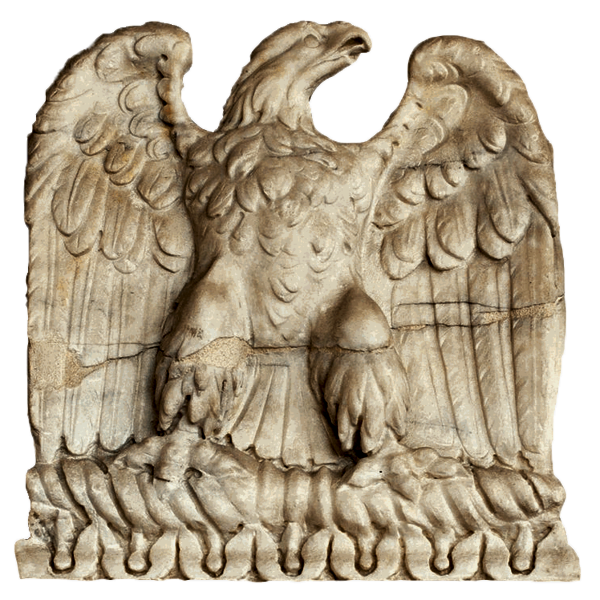
Above: Eagle standard of the Roman Empire (27 BC – 1453)
It is most likely that the few remaining inhabitants sought protection in Antakira, which would become an important Muslim city.

Above: Alcazaba, Antequera
During the Nasrid period, Villanueva de la Concepción was defended by a belt of castles that, at the same time, allowed passage to the city of Málaga.
In this sense, the castles of Cauche, Hins, Almara and Xébar, the latter in the municipality of Villanueva de la Concepción, constituted the safeguard of the three natural passages to the coast.
The importance of the Xébar Castle is demonstrated by the fact that after the conquest of Antequera by the Infante Don Fernando on 4 September 1410, the Nasrids reoccupied the fortress in the autumn of that same year, looted it and destroyed it.
The mayor of Antequera rebuilt it again, but once the Granada War (1482 – 1492) was over, the enclave lost all its strategic value and began to be abandoned until it fell into ruins.
The depopulated territory of Villanueva de la Concepción regained a certain importance in the second half of the 18th century, coinciding with the construction of the Camino Real that would link Málaga and Madrid.
Alongside this important road, farmhouses and country houses began to appear, which over time would end up forming the current town.
Leave the entrance to El Torcal behind and continue along the A-6311, which leads directly to Villanueva de la Concepción.

Above: Villanueva de la Concepción
The working population of the town is approximately 2,000 people and the economic sector that prevails is secondary, since the town has a textile industry that stands out among the municipalities of the Antequera region.

Above: Villanueva de la Concepción
The textile sector is made up of six companies that mass produce clothing (specifically women’s underwear), which employ around 250 women, which represents 15% of the total female employment in the town.
Knickers and romance, could there be a connection?

Above: Villanueva de la Concepción
Within the primary sector, olive trees, almond trees and cereals stand out as the main exponents of agriculture, and goats as the main exponent of livestock farming and the artisanal production of goat cheese in the town.

Above: Villanueva de la Concepción
Construction is another sector that is represented in the town and that concentrates a large number of young people, but in the current economic situation, mainly in this sector, we find a multitude of unemployed young people, with little professional qualification and without studies or with basic studies not completed (mainly motivated by abandonment of these studies, a consequence of the golden years of construction).
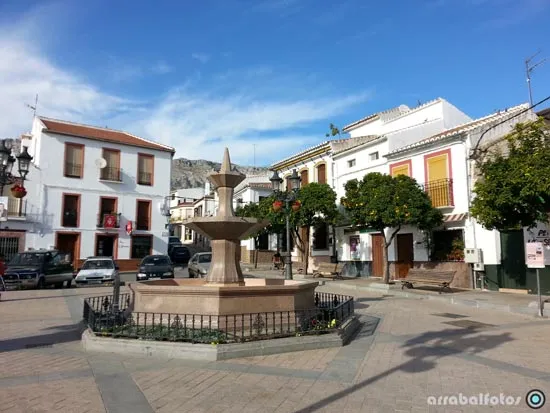
Above: Villanueva de la Concepción
Finally, it should be added that the service sector (tertiary) is also represented in the town and potentially booming.
They are mainly engaged in construction, agriculture and livestock farming, although textile cooperatives are also particularly important.

Above: Villanueva de la Concepción
Carnivals usually take place around Andalusia Day (28 February) and last a weekend.

On Friday night they suggest a theme and whoever wants to dress up according to that theme wins the most original costume.
On Saturday each group dresses up however they want, participating in the most original and funniest costumes.

Above: Flag of Andalucia
Carnival Sunday ends with the traditional tasting of the Bones of Saint Anise, as well as the traditional “burning of the palmito“, which everyone who attends must do in strict mourning.

Above: Bones of Saint Anise
On Saint Mark’s Day, 25 April, the traditional hornazos are made, and then the whole family and friends spend the afternoon in the countryside.
At school, the children spend some time making their own hornazos.

Above: Hornazos
The verdiales are a popular song from the province of Málaga.
It can be considered a cheerful fandango.
In its roots you can find Moorish connotations.
Such was the acceptance of this popular song that it was passed down from generation to generation until present day.
We can find three styles:
Almogía Style, Montes Style and Comares Style.
Among the instruments present in the verdiales you can find the violin, the guitar, the tambourines and the cymbals.

The town’s patron saint’s day is on 8 December, the feast of the Immaculate Conception.
The August Fair is held around 15 August, the feast of the Assumption of the Virgin Mary.
It lasts about six days and during these days there are games and contests such as “chocolatada“, “karaoke“, “climbing walls“, “horse ribbon races“, a contest for decorating the town’s streets, etc.

For older people there are performances in the famous Plaza de Andalucía.
For young people there is the Youth Booth, where every night there is a different theme.

Above: Villanueva de la Concepción
Also worth mentioning is the romantic tourist route, called “Ten Steps to Love“, which was launched on 14 February 2015.
It consists of a guide containing ten stops in different important corners of the town, with a message of love in each one.

Above: Villanueva de la Concepción, the ideal place to say, “I love you”
These messages are:
- Dream of me and I will dream of you.
- Let us leave a mark of our love.
- Whisper in my ear.
- Just give me one sweet look.
- Kiss me in this corner.
- Teach me to forget about thinking.
- Drink from my lips.
- Give me your hand and hear what my heart feels.
- We were walking to meet each other.
- Let’s walk the path together.

Above: Villanueva de la Concepción
We do not visit Villanueva de la Concepción.
We do not walk the path together.
Walking is a state in which the mind, the body and the world are aligned.
Walking allows us to be in our bodies and in the world without being made busy by them.
It leaves us free to think without being wholly lost in our thoughts.
The mind wanders from plans to recollections to observations.
There is a joy in finding that your body is adequate to get you where you want to go.

I seek silence when I walk, but on past walks with the wife when my ragged pace cannot keep in stride with her quick march, she will jam ear pieces in her head and listen to either an audiobook or music.
If we walk together then walking requires talking.
I don’t always have…
Something to say.

And there are times when discretion is the wiser decision as revelation can lead to all sorts of sensitive reactions.
I sometimes wonder whether women truly want to know what a man is thinking or whether they are merely seeking someone who is a sounding board in an echo chamber.

The wife walks to reach her destination.
She curses like a sailor when Life does not go according to plan.
But it is the unpredictable incidents between official events that add up to a life.
The random, the unscreened, allows you to find what you don’t know you are looking for.
You don’t know a place until it surprises you.

(Same could be said about a relationship.)

When you give yourself to places, they give you yourself back.
The more you come to know them, the more they are seeded with memories.
New places offer up new thoughts, new possibilities.
I like walking because it is slow.
The mind, like the feet, works at about three miles / 5 km an hour.
Modern life is moving faster than the speed of thought – or thoughtfulness.

Jean-Jacques Rousseau remarked in his Confessions:
“I can only meditate when I am walking.
When I stop, I cease to think.
My mind only works with my legs.“

Above: Swiss philosopher Jean-Jacques Rousseau (1712 – 1778)
But today my legs do not want to walk any further than the terrace tables of the Torcal de Antequera cafeteria.
By the time we arrive the rain has begun.
My leg aches – physically (and, possibly, psychosomatically).
She wants to walk.
I want to sit.
She wants to leap.
I want to linger.
Let her be fit.
Let me be fat.

Above: “Weird” Al Yankovic, “Fat“
Will she reach a meditative moment in her march?
Doubtful, though I am sure that she will capture a number of great photos which she will later forget to send me.
She is arrayed in windbreaker, jeans and boots.
I am attired in my everyday black lace-ups, jeans and short-sleeved shirt.
She strides away in confidence.
I will be here on the terrace when she returns, for not only does she have the key to the car, but she knows that I have never learned to drive.
I tramp through the centre’s gift shop and cafeteria.
I buy beverages and a souvenir magnet.
I find a seat on the terrace away from the wind and the wet.
The Spanish proprietor knows no English but we manage snippets of conversation in French.
I am not unfriendly nor reticient but I think he senses my desire to be alone at my table.

Above: El Torcal de Antequera Visitors’ Centre
The companionship of a woman is truly a warm wonderful experience, but sometimes separation enhances the relationship.
We have been in one another’s shadow – I have been at her every beck and call – for over 36 hours with only bathroom breaks.
My leg does ache but my mind feels free.
Sometimes it is easier to leave than to stay behind and love.

I feel this way about being in Türkiye and I wonder as she walks away – and remains away for over an hour – despite bursts of heavy rain -whether she too is not somewhat somehow relieved to strut the slopes solo today.

Hey girl’ what you gonna do?
If you get too sentimental
He’s gonna have a better hold on you
You’re gonna have to pay
For every minute you stay
If you want to do something for yourself today
Try walkin’ away
Hey girl, did your momma tell you?
If the boys didn’t like you
That you weren’t no better than a worn out shoe
The words fade away
Mamma was a fool to say
If you want to do something for yourself today
Try walkin’ away
Hey girl,
Take a walk tonight
You don’t owe no man a thing
If he isn’t gonna treat you right
You ain’t some record to be played
On someone’s hit parade
If you want to do something for yourself today
Try walkin’ away

My mind, as weary as my body, transforms the wooden terrace into the boards of a theatre of academia.
The wooden roof supports become Greek columns.
The terrace is a covered colonade leading to the Temple of Apollo.
Around my table men assemble and I speak my mind.
They wander to and fro like tourists dashing in and out of the rain.
I long to rise to my feet and teach while walking up and down, back and forth.

Above: El Torcal de Antequera Visitors’ Centre
To be a Canadian Johnny Appleseed travelling ‘tween 19th century American chautauquas, walking from place to place spreading wisdom to a world hungry for inspiration and imagination.
Ideas are unreliable and those who cultivate them must keep moving in pursuit of support as well as truth.

(Johnny Appleseed (né Johnathan Chapman) (1774 – 1845) was an American pioneer nurseryman who introduced apple trees to large parts of Pennsylvania, Ohio, Indiana, Illinois, and Ontario, as well as the northern counties of West Virginia.
He became an American legend while still alive, due to his kind, generous ways, his leadership in conservation, and the symbolic importance that he attributed to apples.
He was also a missionary for The New Church and the inspiration for many museums and historical sites such as the Johnny Appleseed Museum in Urbana, Ohio.
The popular image is of Johnny Appleseed spreading apple seeds randomly everywhere he went.
In fact, he planted nurseries rather than orchards, built fences around them to protect them from livestock and wildlife, left the nurseries in the care of a neighbor who sold trees on shares, and returned every year or two to tend the nursery.
He planted his first nursery on the bank of Brokenstraw Creek, south of Warren, Pennsylvania.
Next, he seems to have moved to Venango County, along the shore of French Creek, but many of these nurseries were in the Mohican River area of north-central Ohio.
This area included the towns of Mansfield, Lisbon, Lucas, Perrysville and Loudonville.
In 1817, a bulletin of the Church of New Jerusalem printed in Manchester, England was the first to publish a written report about Chapman.
It described a missionary who travelled around the West to sow apple seeds and pass out books of the New Church.
In 1819, Chapman was nearly killed in an accident in Ohio.
One morning, he was picking his crops in a tree when he fell and caught his neck in the fork of the branches.
Shortly after he fell, eight year-old John White found him struggling. White cut the tree down, saving Chapman’s life.
In 1822, the first known use of “John Appleseed” was written in a letter from a member of the New Church.
According to Harper’s New Monthly Magazine, toward the end of his career he was present when an itinerant missionary was exhorting an open-air congregation in Mansfield, Ohio.
The sermon was long and severe on the topic of extravagance, because the pioneers were buying such indulgences as calico and imported tea.
“Where now is there a man who, like the primitive Christians, is traveling to heaven barefooted and clad in coarse raiment?” the preacher repeatedly asked, until Johnny Appleseed walked up to him, put his bare foot on the stump that had served as a pulpit, and said?
“Here’s your primitive Christian!“

Above: Johnny Appleseed, Harper’s New Monthly Magazine (1871)
Author Rosella Rice met Chapman in his later years and in the 1863 History of Ashland County, Ohio, she wrote:
His personal appearance was as singular as his character.
He was a small, “chunked” man, quick and restless in his motions and conversation.
His beard, though not long, was unshaven.
His hair was long and dark, his eye black and sparkling.
He lived the roughest life and often slept in the woods.
His clothing was mostly old, being generally given to him in exchange for apple trees.
He went bare-footed and often travelled miles through the snow in that way.
He wore on his head a tin utensil which answered both as a cap and a mush pot.”

Above: American writer Rosella Rice (1827 – 1888)
Historian Paul Aron argues:
“Chapman was actually a successful businessman.
He bought many of the parcels of land on which he planted his seeds and ultimately accumulated about 1,200 acres across three states.
He wore pauper’s clothing by choice and not out of necessity.“

Chapman would tell stories to children and spread New Church teachings to the adults, receiving in return a floor to sleep on for the night, and sometimes supper.
Rice stated:
“We can hear him read now, just as he did that summer day, when we were busy quilting upstairs, and he lay near the door, his voice rising denunciatory and thrilling — strong and loud as the roar of wind and waves, then soft and soothing as the balmy airs that quivered the morning glory leaves about his gray beard.
His was a strange eloquence at times.
He was undoubtedly a man of genius.“

Chapman cared deeply about animals, including insects.
Henry Howe visited all the counties in Ohio in the early 19th century and collected several stories from the 1830s, when Johnny Appleseed was still alive:
One cool autumnal night, while lying by his campfire in the woods, he observed that the mosquitoes flew in the blaze and were burned.
Johnny, who wore on his head a tin utensil which answered both as a cap and a mush pot, filled it with water and quenched the fire, and afterwards remarked:
“God forbid that I should build a fire for my comfort, that should be the means of destroying any of His creatures.”
Another time, he allegedly made a campfire in a snowstorm at the end of a hollow log in which he intended to pass the night, but he found it occupied by a bear and cubs, so he removed his fire to the other end and slept on the snow in the open air, rather than disturb the bear.”

Above: American author Henry Howe (1816 – 1893)
In a story collected by Eric Braun, Appleseed had a pet wolf that had started following him after he healed its injured leg.
More controversially, he also planted dogfennel during his travels, believing that it was a useful medicinal herb.
It is now regarded as a noxious, invasive weed.

Above: Dogfennel
According to another story, he heard that a horse was to be put down, so he bought the horse, bought a few grassy acres nearby, and turned it out to recover.
When it did, he gave the horse to someone needy, exacting a promise to treat it humanely.

During his later life, he was a vegetarian.
Chapman chose not to marry, as he believed that he would find his soulmate in Heaven if she did not appear to him on Earth.
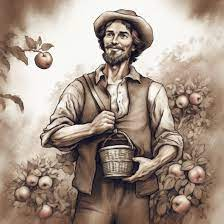
Johnny Appleseed left an estate of over 1,200 acres (490 ha) of valuable nurseries to his sister.
He also owned four plots in Allen County, Indiana, including a nursery in Milan Township with 15,000 trees, and two plots in Mount Vernon, Ohio.
He bought the southwest quarter (160 acres; 65 ha) of section 26, Mohican Township, Ashland County, Ohio, but did not record the deed and lost the property.
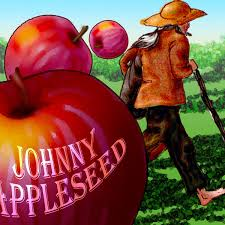
The financial panic of 1837 took a toll on his estate.
(The Panic of 1837 was a financial crisis in the US that began a major depression (not to be confused with the Great Depression), which lasted until the mid-1840s.
Profits, prices and wages dropped, westward expansion was stalled, unemployment rose, and pessimism abounded.
The panic had both domestic and foreign origins.
Speculative lending practices in the West, a sharp decline in cotton prices, a collapsing land bubble, international specie (bullion coin) flows, and restrictive lending policies in Britain were all factors.
The lack of a central bank to regulate fiscal matters, which President Andrew Jackson had ensured by not extending the charter of the Second Bank of the United States, was also key.

Above: US Andrew Jackson (1767 – 1845)
The ailing economy of early 1837 led investors to panic.
A bank run ensued, giving the crisis its name.
The bank run came to a head on 10 May 1837, when banks in New York City ran out of gold and silver.
They immediately suspended specie payments and would no longer redeem commercial paper in specie at full face value.
A significant economic collapse followed:
Despite a brief recovery in 1838, the recession persisted for nearly seven years.
Over 40% of all banks failed, businesses closed, prices declined, and there was mass unemployment.
From 1837 to 1844, deflation in wages and prices was widespread.
As the nation underwent hardships, positive forces were at work that, in time, would invigorate the economy.
Railroads had begun their relentless expansion.
Furnace masters had discovered how to smelt greater quantities of pig iron.
The machine tool and the metalworking industries were taking shape.
Coal had begun its ascent, replacing wood as the nation’s major source of heat.
Innovations with agricultural machinery would bring greater productivity from the land.
The nation’s population would also increase by more than one-third during the 1840s, despite the economic turmoil.
After downturns in 1845-1846 and 1847-1848, gold was discovered in California in 1848, setting off a prosperity of its own.
Meanwhile, individuals and institutions were hurting.)

A commentary on the depressed state of the American economy, particularly in New York, during the financial panic of 1837.
Again, the blame is laid on the treasury policies of Andrew Jackson, whose hat, spectacles, and clay pipe with the word “Glory” appear in the sky overhead.
Clay illustrates some of the effects of the depression in a fanciful street scene, with emphasis on the plight of the working class.
A panorama of offices, rooming houses, and shops reflects the hard times.
The Customs House, carrying a sign “All Bonds must be paid in Specie” is idle.
In contrast, the Mechanics Bank next door, which displays a sign “No specie payments made here” is mobbed by frantic customers.
Principal figures are (from left to right): a mother with infant (sprawled on a straw mat), an intoxicated Bowery tough, a militiaman (seated, smoking), a banker or landlord encountering a begging widow with child, a barefoot sailor, a driver or husbandman, a Scotch mason (seated on the ground), and a carpenter.
These are in contrast to the prosperous attorney “Peter Pillage” who is collected by an elegant carriage at the far right.
In the background are a river, Bridewell debtors prison, and an almshouse.
A punctured balloon marked “Safety Fund” falls from the sky.
The print was issued in July 1837.
A flag flying on the left has the sarcastic words:
“4 July 1837: 61st anniversary of our independence“.
Trees brought only two or three cents each, as opposed to the “fippenny bit” (about six and a quarter cents) that he usually got.
Some of his land was sold to pay taxes following his death, and litigation used up much of the rest.

In 1880, abolitionist author Lydia Maria Child mythologized Appleseed in a poem:
In cities, some said the old man was crazy
While others said he was only lazy;
But he took no notice of gibes and jeers,
He knew he was working for future years.
And if they inquire whence came such trees
Where not a bough once swayed in the breeze,
The answer still comes, as they travel on,
“These trees were planted by Appleseed John.“

Above: American writer Lydia Maria Child (1802 – 1880)
“In Fort Wayne, on Tuesday 18 March 1845, John Chapman, commonly known by the name of Johnny Appleseed, about 70 years of age.
Many of our citizens will remember this eccentric individual, as he sauntered through town eating his dry rusk and cold meat, and freely conversing on the mysteries of his religious faith.
He was a devoted follower of Emanuel Swedenborg, and notwithstanding his apparent poverty, was reputed to be in good circumstances.“

Above: Swedish theologian Emanuel Swedenborg (1688 – 1772)
“On the same day in this neighborhood, at an advanced age, Mr. John Chapman (better known as Johnny Appleseed).
The deceased was well known through this region by his eccentricity, and the strange garb he usually wore.
He followed the occupation of a nurseryman and has been a regular visitor here upwards of 10 years.
He was a native of Pennsylvania we understand but his home — if home he had — for some years past was in the neighborhood of Cleveland, where he has relatives living.
He is supposed to have considerable property, yet denied himself almost the common necessities of life — not so much perhaps for avarice as from his peculiar notions on religious subjects.
He was a follower of Swedenborg and devoutly believed that the more he endured in this world the less he would have to suffer and the greater would be his happiness hereafter — he submitted to every privation with cheerfulness and content, believing that in so doing he was securing snug quarters hereafter.
In the most inclement weather he might be seen barefooted and almost naked except when he chanced to pick up articles of old clothing.
Notwithstanding the privations and exposure he endured, he lived to an extreme old age, not less than 80 years at the time of his death —though no person would have judged from his appearance that he was 60.
He always carried with him some work on the doctrines of Swedenborg with which he was perfectly familiar, and would readily converse and argue on his tenets, using much shrewdness and penetration.
His death was quite sudden.
He was seen on our streets a day or two previous.“

“He died near Fort Wayne, Indiana, a stranger among strangers, who kindly cared for him.
He died the death of the righteous, calmly and peacefully, and with little suffering or pain.
So long as his memory lives will a grateful people say:
“He went about doing good.““
Perhaps even America needs a Diogenes or a Don Quixote.

Above: Johnny Appleseed
Hegel walked in Heidelberg.

Above: German philosopher Georg Friedrich Wilhelm Hegel (1770 – 1831)
Hegel insists that reason and freedom are historical achievements, not natural givens.
He contends that people cannot presume any truths that have not passed the test of experience, must attain their “verification” in the natural world and the historical accomplishments of humankind.
Guided by the Delphic imperative to “know thyself“, Hegel presents free self-determination as the essence of humankind.
A philosopher should not confine himself to views that have been held but penetrate these to the human reality they reflect.”
It is not enough to consider propositions, or even the content of consciousness.
“It is worthwhile to ask in every instance what kind of spirit would entertain such propositions, hold such views, and have such a consciousness.
Every outlook in other words, is to be studied not merely as an academic possibility but as an existential reality.“
Hegel regards “the basic structure” of the philosophy of nature as complete, he was “aware that science is not ‘finished’ and will continue to make new discoveries“.
Philosophy is “its own time comprehended in thoughts“.)

Above: Heidelberg, Deutschland
Kant sauntered about Königsberg.

Above: German philosopher Immanuel Kant (1724 – 1804)
(Kant’s comprehensive and systematic works in epistemology, metaphysics, ethics and aesthetics have made him one of the most influential and controversial figures in modern Western philosophy, being called the “father of modern ethics“, the “father of modern aesthetics“, and for bringing together rationalism and empiricism earned the title of the “father of modern philosophy“.
Kant argued that space and time are mere “forms of intuition” that structure all experience and that the objects of experience are mere “appearances“.
The nature of things as they are in themselves is unknowable to us.
Kant believed that reason is the source of morality, and that aesthetics arises from a faculty of disinterested judgment.
Kant’s religious views were deeply connected to his moral theory.
Their exact nature remains in dispute.
He hoped that perpetual peace could be secured through an international federation of republican states and international cooperation.
Like many of his contemporaries, Kant was greatly impressed with the scientific advances made by Newton and others.
This new evidence of the power of human reason called into question for many the traditional authority of politics and religion.
In particular, the modern mechanistic view of the world called into question the very possibility of morality.
For, if there is no agency, there cannot be any responsibility.
The aim of Kant’s critical project is to secure human autonomy, the basis of religion and morality, from this threat of mechanism — and to do so in a way that preserves the advances of modern science.
In the Critique of Pure Reason, Kant summarizes his philosophical concerns in the following three questions:
- What can I know?
- What should I do?
- What may I hope?
Even though we cannot strictly know that we are free, we can — and for practical purposes, must — think of ourselves as free.
In Kant’s own words:
“I had to deny knowledge in order to make room for faith.“
Kant argues that the mind itself necessarily makes a constitutive contribution to knowledge, that this contribution is transcendental rather than psychological, and that to act autonomously is to act according to rational moral principles.
“Thoughts without content are empty, intuitions without concepts are blind.“
Kant observes:
“Human reason, without being moved by the mere vanity of knowing it all, inexorably pushes on, driven by its own need to such questions that cannot be answered by any experiential use of reason.”
With regard to morality, Kant argued that the source of the good lies not in anything outside the human subject, either in nature or given by God, but rather is only the good will itself.
A good will is one that acts from duty in accordance with the universal moral law that the autonomous human being freely gives itself.
This law obliges one to treat humanity as an end in itself rather than merely as means to other ends the individual might hold.
All moral obligation is grounded in duty.
The moral law is a principle of reason itself, not based on contingent facts about the world, such as what would make us happy.
To act on the moral law has no other motive than “worthiness to be happy“.
There are two sorts of ends that it is our duty to have:
Our own perfection and the happiness of others.
“Perfection” includes both our natural perfection (the development of our talents, skills, and capacities of understanding) and moral perfection (our virtuous disposition).
A person’s “happiness” is the greatest rational whole of the ends the person set for the sake of her own satisfaction.
It is impossible to philosophize about things as they exist independently of human perception or of how they are “for us“.
It is is possible to discover and systematically explore the inherent limits of the human ability to know.
People are naturally endowed with the ability and obligation toward right reason and acting.
“Two things fill my mind with ever new and increasing admiration and reverence:
The starry heavens above me and the moral law within me.”

Above: The starry night, Vincent van Gogh (1889)
Things, knowledge and forms of consciousness rest on prior conditions that make them possible.
Objective experience is actively constituted or constructed by the functioning of the human mind.
Moral autonomy is central to humanity.
Human beings should be treated as ends rather than as mere means.)

Above: Königsberg Castle, Kaliningrad, Russia
Nietzsche noted:
“For recreation I turn to three things and a wonderful recreation they provide – my Schopenhauer, Schumann’s music and solitary walks.“

Above: German philosopher Friedrich Nietzsche (1844 – 1900)
(Because of Nietzsche’s evocative style and provocative ideas, his philosophy generates passionate reactions.
His works remain controversial, due to varying interpretations and misinterpretations.
By looking into the abyss of human suffering, passionately and joyously affirmed Life, finding it worth living.
Nietzsche rejected the idea of objective reality, arguing that knowledge is contingent and conditional, relative to various fluid perspectives or interests.
This leads to constant reassessment of rules (i.e., those of philosophy, the scientific method, etc.) according to the circumstances of individual perspectives.
This view has acquired the name perspectivism.
A table of values hangs above every great person.
What is common among different peoples is the act of esteeming, of creating values, even if the values are different from one person to the next.
Nietzsche asserted that what made people great was not the content of their beliefs, but the act of valuing.
Thus the values a community strives to articulate are not as important as the collective will to see those values come to pass.
The willingness is more essential than the merit of the goal itself.
“A thousand goals have there been so far, for there are a thousand peoples.
Only the yoke for the thousand necks is still lacking: the one goal is lacking.
Humanity still has no goal.”
In the original system of morality, to be “good” was to be happy and to have the things related to happiness:
Wealth, strength, health, power, etc.
To be “bad” was to be like the slaves over whom the aristocracy ruled:
Poor, weak, sick, pathetic — objects of pity or disgust rather than hatred.
Become what you are.
Nietzsche believed that Christian moral doctrine was originally constructed to counteract nihilism.
It provides people with traditional beliefs about the moral values of good and evil, belief in God (whose existence one might appeal to in justifying the evil in the world) and a framework with which one might claim to have objective knowledge.
In constructing a world where objective knowledge is supposed to be possible, Christianity is an antidote to a primal form of nihilism —the despair of meaninglessness.
Life turns away from itself as there is nothing of value to be found in the world.
A basic element in Nietzsche’s philosophical outlook is the “will to power”, which provides a basis for understanding human behaviour— more so than competing explanations, such as the ones based on pressure for adaptation or survival.
As such, according to Nietzsche, the drive for conservation appears as the major motivator of human or animal behaviour only in exceptions, as the general condition of life is not one of a ‘struggle for existence‘.
More often than not, self-conservation is a consequence of a creature’s will to exert its strength on the outside world.
Happiness is not an aim.
It is a consequence of overcoming hurdles to one’s actions and the fulfilment of the will.
“Man is something that shall be overcome.
What have you done to overcome him?
All beings so far have created something beyond themselves:
And you want to be the ebb of that great tide, and would rather go back to the beast than overcome man?
What is the ape to man?
A laughing stock or a painful embarrassment.
You have made your way from worm to man, and much within you is still worm.
Once you were apes, and even yet man is more of an ape than any ape.
Even the wisest among you is only a conflict and hybrid of plant and ghost.
But do I bid you become ghosts or plants?
Man is a rope stretched between the animal and the Übermensch — a rope over an abyss.
What is great in man is that he is a bridge and not a goal:
What is lovable in man is that he is an over-going and a going under.“
Zarathustra contrasts the Übermensch with the last man of egalitarian modernity, an alternative goal humanity might set for itself.
The last man is possible only by mankind’s having bred an apathetic creature who has no great passion or commitment, who is unable to dream, who merely earns his living and keeps warm.
Most human beings cannot avoid other-worldliness because they really are sick, not because of any choice they made.
Friedrich Nietzsche held a pessimistic view of modern society and culture.
He believed that the press and mass culture led to conformity and brought about mediocrity and that the lack of intellectual progress was leading to the decline of the human species.
In his opinion, some people would be able to become superior individuals through the use of willpower.
By rising above mass culture, those persons would produce higher, brighter and healthier human beings.)

Above: German philosopher Arthur Schopenhauer (1788 – 1860)
Schopenhauer stresses the senses furnish the raw material by which the intellect produces the world as representation.
Our knowledge and experience of the world is always indirect.
We perceive reality as something spatial and temporal not because reality is inherently spatial and temporal, but because that is how our minds operate in perceiving an object.
Therefore, understanding objects in space and time represents our ‘contribution‘ to an experience.
The everyday world of experience, and indeed the entire material world related to space and time, is merely ‘appearance‘ or ‘phenomena‘, entirely distinct from the thing-in-itself.
In other words, my wife’s perception of El Torcal though significant and real to her would not be my perception of the same place.
The place is real but our perceptions of it differ.

Above: El Torcal de Antequera
No individual human actions are free, Schopenhauer argues, because they are events in the world of appearance and thus are subject to the principle of sufficient reason:
A person’s actions are a necessary consequence of motives and the given character of the individual human.
Necessity extends to the actions of human beings just as it does to every other appearance, and thus we cannot speak of freedom of individual willing.
“A man can do as he will, but not will as he will.“
According to Schopenhauer, salvation from our miserable existence can come through the will’s being “tranquillized” by the metaphysical insight that reveals individuality to be merely an illusion.
The saint or ‘great soul‘ intuitively “recognizes the whole, comprehends its essence, and finds that it is constantly passing away, caught up in vain strivings, inner conflict, and perpetual suffering“.
The negation of the will, in other words, stems from the insight that the world in-itself (free from the forms of space and time) is one.
Ascetic practices, Schopenhauer remarks, are used to aid the will’s “self-abolition“, which brings about a blissful, redemptive “will-less” state of emptiness that is free from striving or suffering.
For Schopenhauer, human “willing“—desiring, craving, etc.—is at the root of suffering.
A temporary way to escape this pain is through aesthetic contemplation.
In aesthetic contemplation, one no longer perceives an object of perception as something from which one is separated;.
Rather “it is as if the object alone existed without anyone perceiving it, and one can thus no longer separate the perceiver from the perception, but the two have become one, the entirety of consciousness entirely filled and occupied by a single perceptual image“.
Subject and object are no longer distinguishable.
The Idea comes to the fore.
From this aesthetic immersion, one is no longer an individual who suffers as a result of servitude to one’s individual will but, rather, becomes a “pure, will-less, painless, timeless, subject of cognition“.
The pure, will-less subject of cognition is cognizant only of Ideas, not individual things:
This is a kind of cognition that is unconcerned with relations between objects according to the Principle of Sufficient Reason (time, space, cause and effect) and instead involves complete absorption in the object.
Art is the practical consequence of this brief aesthetic contemplation, since it attempts to depict the essence / pure Ideas of the world.
Music, for Schopenhauer, is the purest form of art because it is the one that depicts the will itself without it appearing as subject to the Principle of Sufficient Reason, therefore as an individual object.
According to Daniel Albright:
“Schopenhauer thought that music was the only art that did not merely copy ideas, but actually embodied the will itself“.
He deemed music a timeless, universal language comprehended everywhere, that can imbue global enthusiasm, if in possession of a significant melody.
What is relevant for ethics are individuals who can act against their own self-interest.
If we take a man who suffers when he sees his fellow men living in poverty and consequently uses a significant part of his income to support their needs instead of his own pleasures, then the simplest way to describe this is that he makes less distinction between himself and others than is usually made.
Regarding how things appear to us, the egoist asserts a gap between two individuals, but the altruist experiences the sufferings of others as his own.
In the same way a compassionate man cannot hurt animals, though they appear as distinct from himself.
What motivates the altruist is compassion.
The suffering of others is for him not a cold matter to which he is indifferent, but he feels connectiveness to all beings.
Compassion is thus the basis of morality.
Human life is a ceaseless struggle for satisfaction.
Suffering is the moral outcome of our attachment to pleasure.
A happy individual life in a world of suffering is like a beggar who dreams one night that he is a King.)

Above: German composer Robert Schumann (1810 – 1856)
Did Schopenhauer frequent the footpaths of Frankfurt?

Above: Frankfurt am Main, Deutschland (1816)
Did Schumann stroll the streets of Bonn?

Above: Bonn, Deutschland
I like to imagine that they did.

Philosophers walked, but what did they do when walking was denied them, when they could no longer walk?

By getting out into the world, by going outside, whether in the fields or streets, a solitary walker is in the world, but apart from it, with the detachment of a traveller rather than the ties of the worker, dweller or a member of a group.
Within a walk a man is able to live in thought and reverie, to be self-sufficient and thus to survive a world he feels has betrayed him.
A solitary walk provides him with a jumble of thoughts and recollections, a kind of unstructured stream of consciousness.
Walking is not analytical but rather it is an improvisational act.

Søren Kierkegaard chose Copenhagen as his place to walk and study his human subjects.
The street of Copenhagen were his “reception room“.

Above: Copenhagen, Denmark
Kierkegaard’s great daily pleasure was a way to be among people for a man who could not be with them, a way to bask in the faint human warmth of brief encounters, acquaintances’ greetings and overheard conversations.
A lone walker is both present and detached from the world around, more audience than participant.
“I need diversion, the diversion of chance contacts on the streets and alleys.“
The mind works best when surrounded by distraction as it focuses in the act of withdrawing from surrounding bustle rather than in being isolated from it.
“It is wonderful.
It is the accidental and insignificant things in Life which are significant.“
Although extensive walking is often perceived as signs of idleness they are in fact the foundation of prolific philosophy.
Kierkegaard described how on his way home, “overwhelmed with ideas ready to be written down and in a sense so weak that I could scarcely walk“.

Above: Danish philosopher Søren Kierkegaard (1813 – 1855)
(Kierkegaard’s journals are one of the most important sources for an understanding of his philosophy.
Kierkegaard wrote over 7,000 pages in his journals on events, musings, thoughts about his works and everyday remarks.
Kierkegaard’s journals were the source of many aphorisms credited to the philosopher.

The following passage, from 1 August 1835, is perhaps his most oft-quoted aphorism and a key quote for existentialist studies:
What I really need is to get clear about what I must do, not what I must know, except insofar as knowledge must precede every act.
What matters is to find a purpose, to see what it really is that God wills that I shall do.
The crucial thing is to find a truth which is truth for me, to find the idea for which I am willing to live and die.”
He wrote this way about indirect communication in the same journal entry:
One must first learn to know himself before knowing anything else.
Not until a man has inwardly understood himself and then sees the course he is to take does his life gain peace and meaning.
Only then is he free of that irksome, sinister travelling companion — that irony of life, which manifests itself in the sphere of knowledge and invites true knowing to begin with a not-knowing just as God created the world from nothing.
But in the waters of morality it is especially at home to those who still have not entered the trade winds of virtue.
Here it tumbles a person about in a horrible way, for a time lets him feel happy and content in his resolve to go ahead along the right path, then hurls him into the abyss of despair.
Often it lulls a man to sleep with the thought, “After all, things cannot be otherwise.”, only to awaken him suddenly to a rigorous interrogation.
Frequently it seems to let a veil of forgetfulness fall over the past, only to make every single trifle appear in a strong light again.
When he struggles along the right path, rejoicing in having overcome temptation’s power, there may come at almost the same time, right on the heels of perfect victory, an apparently insignificant external circumstance which pushes him down, like Sisyphus, from the height of the crag.
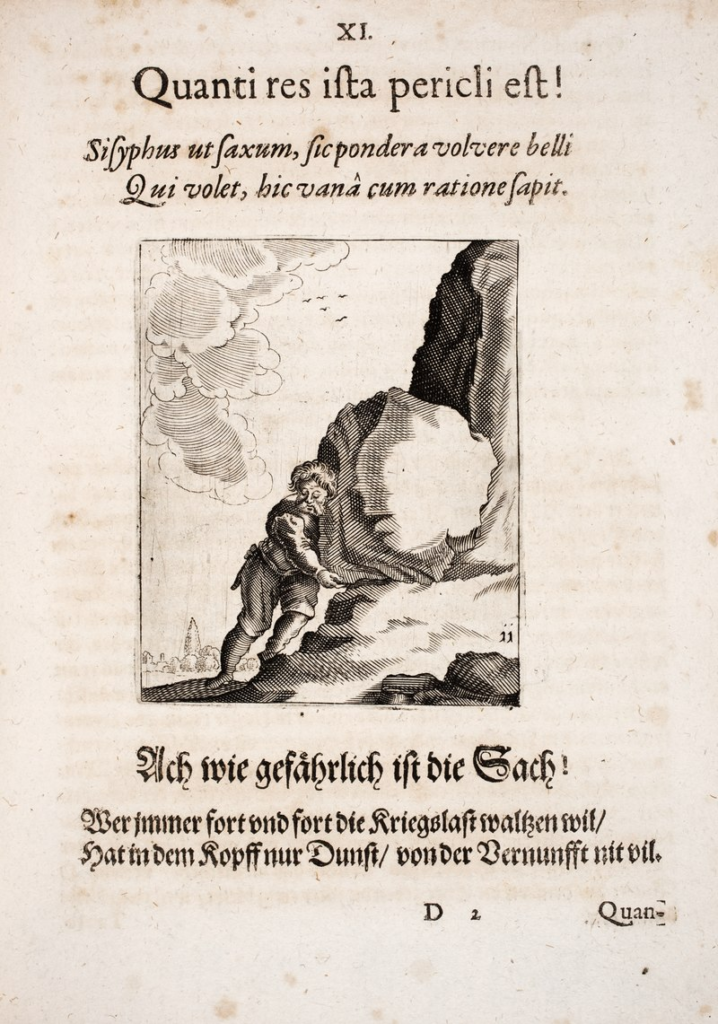
Above: Johann Vogel’s Meditationes emblematicae de restaurata pace Germaniae (1649) – Sisyphus rolling his rock
(In Greek mythology, Sisyphus was the founder and king of Ephyra (now known as Corinth).
He was a devious tyrant who killed visitors to show off his power.
This violation of the sacred hospitality tradition greatly angered the gods.
They punished him for trickery of others, including his cheating death twice.
The gods forced him to roll an immense boulder up a hill only for it to roll back down every time it neared the top, repeating this action for eternity.
Through the classical influence on modern culture, tasks that are both labourious and futile are therefore described as Sisyphean.)
Often when a person has concentrated on something, a minor external circumstance arises which destroys everything.
(As in the case of a man who, weary of life, is about to throw himself into the Thames and at the crucial moment is halted by the sting of a mosquito.)

Frequently a person feels his very best when the illness is the worst, as in tuberculosis.
In vain he tries to resist it but he has not sufficient strength, and it is no help to him that he has gone through the same thing many times.
The kind of practice acquired in this way does not apply here.”

Kierkegaard believed:
“Each generation has its own task and need not trouble itself unduly by being everything to previous and succeeding generations.
To a certain degree every generation and every individual begins his life from the beginning.
No generation has learned to love from another.
No generation is able to begin at any other point than the beginning.
No generation learns the essentially human from a previous one.
Those true Christians who in every generation live a life contemporaneous with that of Christ have nothing whatsoever to do with Christians of the preceding generation, but all the more with their contemporary, Christ.
His life here on Earth attends every generation, and every generation severally, as sacred history.
The whole generation and every individual in the generation is a participant in one’s having faith.“

Kierkegaard always stressed deliberation and choice in his writings and wrote against comparison.
“Worldly worry always seeks to lead a human being into the small-minded unrest of comparisons, away from the lofty calmness of simple thoughts.
To be clothed, then, means to be a human being — and therefore to be well clothed.
Worldly worry is preoccupied with clothes and dissimilarity of clothes.
Should not the invitation to learn from the lilies be welcome to everyone just as the reminder is useful to him?

Above: Søren Kierkegaard as he was caricatured in Meïr Aron Goldschmidts satirical journal Corsaren (1902)
Alas, those great, uplifting, simple thoughts, those first thoughts, are more and more forgotten, perhaps entirely forgotten in the weekday and worldly life of comparisons.
The one human being compares himself with others, the one generation compares itself with the other, and thus the heaped up pile of comparisons overwhelms a person.
As the ingenuity and busyness increase, there come to be more and more in each generation who slavishly work a whole lifetime far down in the low underground regions of comparisons.
Indeed, just as miners never see the light of day, so these unhappy people never come to see the light:
Those uplifting, simple thoughts, those first thoughts about how glorious it is to be a human being.
And up there in the higher regions of comparison, smiling vanity plays its false game and deceives the happy ones so that they receive no impression from those lofty, simple thoughts, those first thoughts.“

“Imagine hidden in a very plain setting a secret chest in which the most precious is placed — there is a spring that must be pressed, but the spring is concealed, and the pressure must be of a certain force so that an accidental pressure cannot be sufficient.
The hope of eternity is concealed within a person’s innermost being in the same way, and hardship is the pressure.
When the pressure is put on the concealed spring, and forcefully enough, the content appears in all its glory!

Imagine a kernel of grain placed in the Earth.
If it is to grow, what does it need?
First of all space:
It must have space.
Next, pressure:
There must also be pressure — sprouting is making space for itself in opposition.
Eternity’s hope is placed in a person’s innermost being in the same way.
But hardship makes space by setting everything else aside, everything provisional, which is brought to despair.
Thus hardship’s pressure is what draws forth!

Above: Parable of the Sower, Pieter Brueghel the Elder (1557)
Imagine, as indeed is the case, an animal that has a defense weapon with which it defends itself but which it uses only in mortal danger.
Eternity’s hope is in a person’s innermost being in the same way.
Hardship is the mortal danger.
Imagine a creeping animal that nevertheless has wings that it can use when it is brought to an extremity, but for everyday use it does not find it worth the trouble to use them.
Eternity’s hope is in a person’s innermost being in the same way.
He has wings but he must be brought to an extremity in order to discover them, or in order to develop them, or in order to use them!“

In Kierkegaard’s view the Church should not try to prove Christianity or even defend it.
It should help the single individual to make a leap of faith, the faith that God is love and has a task for that very same single individual.
He wrote:
“Fear and trembling is not the primus motor in the Christian life, for it is love.
But it is what the oscillating balance wheel is to the clock — it is the oscillating balance wheel of the Christian life.“
Kierkegaard identified the leap of faith as the good resolution.

Kierkegaard discussed the knight of faith in Works of Love (1847) by using the story of Jesus healing the bleeding woman who showed the “originality of faith” by believing that if she touched Jesus’ robe she would be healed.
She kept that secret within herself.
If doubt is the beginning, then God is lost long before the end, and the individual is released from always having a task, but also from always having the comfort that there is always a task.
But if the consciousness of guilt is the beginning, then the beginning of doubt is rendered impossible, and then the joy is that there is always a task.
The joy, then, is that it is eternally certain that God is love.
More specifically understood, the joy is that there is always a task.
As long as there is life there is hope, but as long as there is a task there is life, and as long as there is life there is hope. —
Indeed, the task itself is not merely a hope for a future time but is a joyful present.”
And isn’t that what walking is – the joy of the present, the gift of the moment?

I have often heard the aphorism that men are stupid and women are crazy.
I believe there is some truth to this.
Men are so easily manipulated by our desires for sustenance, sex and praise.
Women drive themselves insane by endless comparisons – never content with what is, but instead obsessive about what should be.

Walking is itself a way of grounding one’s thoughts in a personal and embodied experience of the world that lends itself to writing.
This is why the meaning of walking is discussed in poetry, novels, letters, diaries, travellers’ accounts and first person essays.
Walking is the experience by which we understand our body in relationship to the world.
The body is our experience of what is always here.
The body in motion experiences the unity of all its parts as the contınuous “here” that moves toward and through the various “theres“.
A person experiences the world in its emphasis on the act of walking rather than on the senses and the mind.
The specifics of one’s bodily experience and location shape one’s intellectual perspective.

I confess that I have become more sedentary than common sense would advise.
I know this must change.
My wife forecasts the need for knee replacement.
I hope she is wrong.

Where she is right is that my increasing bulk does my bones no favours.
I have never been a fan of running or jogging, for the avid practictioner of these seems inflexibly bound to follow the same course again and again and again.
I love travelling and walking is my preferred method of travel.
I love the unexpectedness of a stroll and the thoughts that a walk generates.

I am again reminded of Jean-Jacques Rousseau.

Above: Jean-Jacques Rousseau
In 1749 the writer and Encyclopedist Denis Diderot was thrown into jail for writing an essay questioning the goodness of God.
In 1742 he formed a friendship with Jean-Jacques Rousseau, whom he met while watching games of chess and drinking coffee at the Café de la Régence.
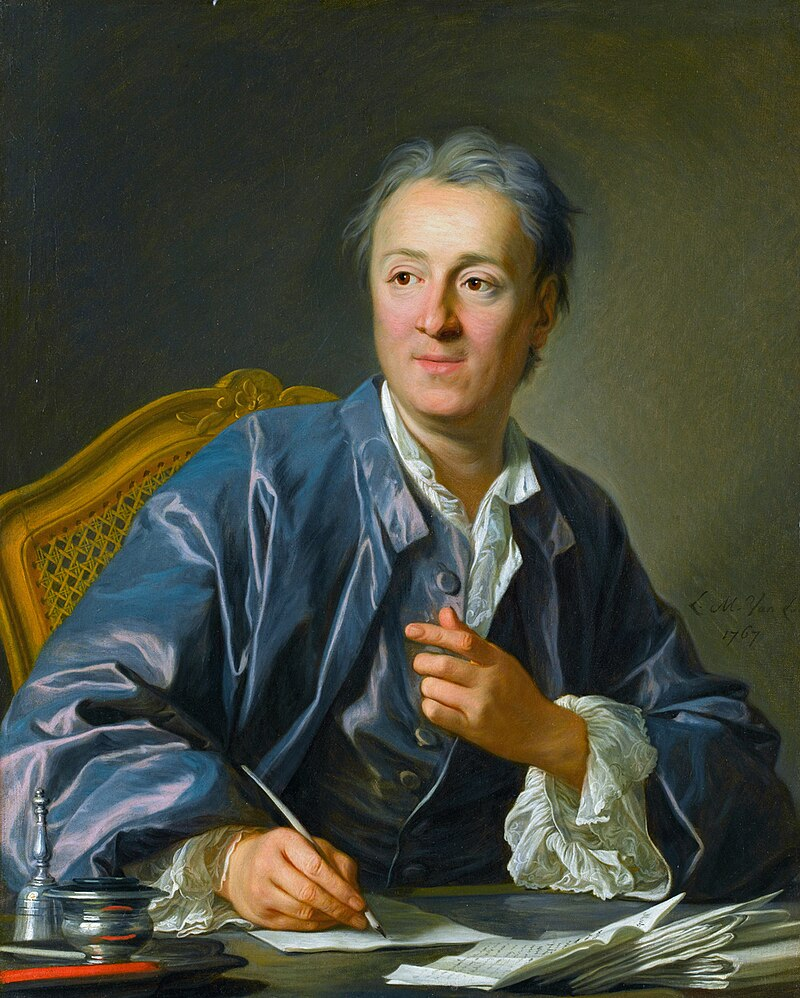
Above: French philosopher Denis Diderot (1713 – 1784)
(He was “a philosopher in whom all the contradictions of the time struggle with one another“.
In 1746, Diderot wrote his first original work: the Philosophical Thoughts (Pensées philosophiques).
In this book, Diderot argued for a reconciliation of reason with feeling so as to establish harmony.
According to Diderot, without feeling there is a detrimental effect on virtue, and no possibility of creating sublime work.
However, since feeling without discipline can be destructive, reason is necessary to control feeling.

In 1747, Diderot wrote The Skeptic’s Walk (Promenade du sceptique) in which a deist, an atheist, and a pantheist have a dialogue on the nature of divinity.
The deist gives the argument from design.
The atheist says that the Universe is better explained by physics, chemistry, matter, and motion.
The pantheist says that the cosmic unity of mind and matter, which are co-eternal and comprise the Universe, is God.

The Indiscreet Jewels (Les bijoux indiscrets) is about the magical ring of a Sultan that induces any woman’s “discreet jewels” to confess their sexual experiences when the ring is pointed at them.
In all, the ring is pointed at 30 different women in the book — usually at a dinner or a social meeting — with the Sultan typically being visible to the woman.
However, since the ring has the additional property of making its owner invisible when required, a few of the sexual experiences recounted are through direct observation with the Sultan making himself invisible and placing his person in the unsuspecting woman’s boudoir.
Besides the bawdiness, there are several digressions into philosophy, music, and literature in the book.
In one such philosophical digression, the Sultan has a dream in which he sees a child named “Experiment” growing bigger and stronger till the child demolishes an ancient temple named “Hypothesis“.
The book proved to be lucrative for Diderot even though it could only be sold clandestinely.
It is Diderot’s most published work.
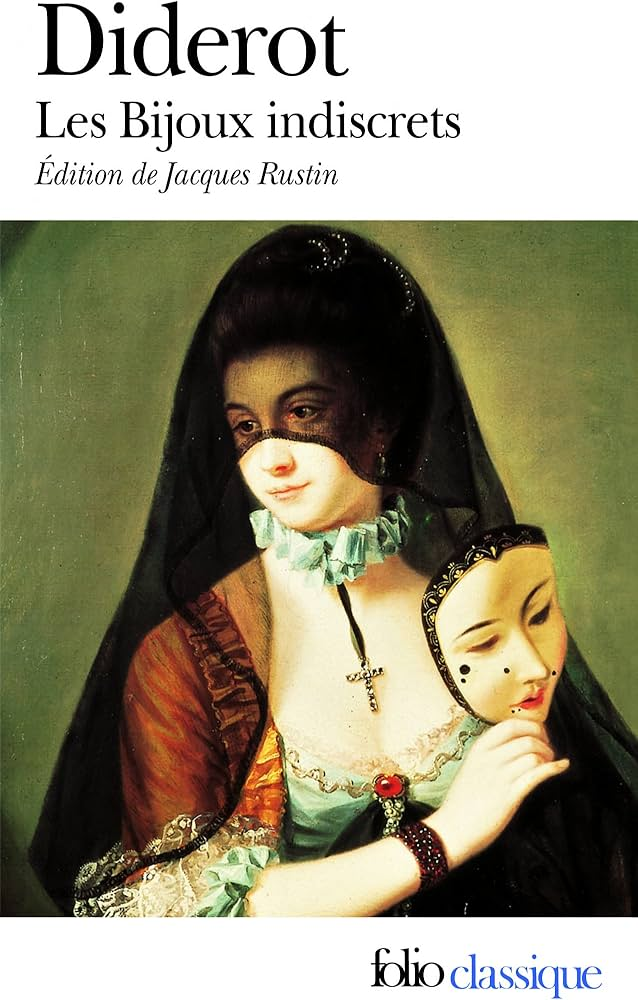
Diderot opposed mysticism and occultism, which were highly prevalent in France at the time he wrote, and believed religious truth claims must fall under the domain of reason, not mystical experience or esoteric secrets.
“What I like is a philosophy clear, definite and frank.“
Diderot kept writing on science in a desultory way all his life.
On the unity of nature Diderot wrote:
“Without the idea of the whole, philosophy is no more.
Everything changes.
Everything passes.
Nothing remains but the whole.“

Above: Monument to Denis Diderot, Paris, France
In conceiving the Encyclopédie, Diderot had thought of the work as a fight on behalf of posterity and had expressed confidence that posterity would be grateful for his effort.
According to Diderot:
“Posterity is for the philosopher what the ‘other world’ is for the man of religion.“
The main questions of Diderot’s thought are:
- Why be moral in a world without God?
- How should we appreciate art?
- What are we and where do we come from?
- What are sex and love?
- How can a philosopher intervene in political affairs?
Diderot’s work was mired in controversy from the beginning.
These twenty years were to Diderot not merely a time of incessant drudgery, but harassing persecution and desertion of friends. The ecclesiastical party detested the Encyclopédie, in which they saw a rising stronghold for their philosophic enemies.
By 1757, they could endure it no longer — the subscribers had grown from 2,000 to 4,000, a measure of the growth of the work in popular influence and power.
Diderot wanted the Encyclopédie to give all the knowledge of the world to the people of France.
However, the Encyclopédie threatened the governing social classes of France (aristocracy) because it took for granted the justice of religious tolerance, freedom of thought, and the value of science and industry.
It asserted the doctrine that the main concern of the nation’s government ought to be the nation’s common people.
It was believed that the Encyclopédie was the work of an organized band of conspirators against society, and that the dangerous ideas they held were made truly formidable by their open publication.
In 1759, the Encyclopédie was formally suppressed.
The decree did not stop the work, which went on, but its difficulties increased by the necessity of being clandestine.
Diderot was left to finish the task as best he could.
He wrote approximately 7,000 articles, some very slight, but many of them laborious, comprehensive, and long.
He damaged his eyesight correcting proofs and editing the manuscripts of less scrupulous contributors.
He spent his days at workshops, mastering manufacturing processes, and his nights writing what he had learned during the day.
He was incessantly harassed by threats of police raids.
The last copies of the first volume were issued in 1765.
In 1764, when his immense work was drawing to an end, he encountered a crowning mortification:
He discovered that the bookseller, Le Breton, fearing the government’s displeasure, had struck out from the proof sheets, after they had left Diderot’s hands, all passages that he considered too dangerous.
He and his printing house overseer had worked in complete secrecy, and had moreover deliberately destroyed the author’s original manuscript so that the damage could not be repaired. The monument to which Diderot had given the labour of 20 long and oppressive years was irreparably mutilated and defaced.
It was 12 years, in 1772, before the subscribers received the final 28 folio volumes of the Encyclopédie, ou dictionnaire raisonné des sciences, des arts et des métiers since the first volume had been published.
When Diderot’s work on the Encyclopédie project came to an end in 1765, he expressed concerns to his friends that the 25 years he had spent on the project had been wasted.

Although the Encyclopédie was Diderot’s most monumental product, he was the author of many other works that sowed nearly every intellectual field with new and creative ideas.
Diderot’s writing ranges from a graceful trifle like the Regrets sur ma vieille robe de chambre (Regrets for my Old Dressing Gown) up to the heady D’Alembert’s Dream (Le Rêve de d’Alembert) (1769), a philosophical dialogue in which he plunges into the depths of the controversy as to the ultimate constitution of matter and the meaning of life.

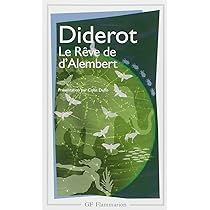
Diderot’s celebrated Letter on the Blind (Lettre sur les aveugles à l’usage de ceux qui voient) (1749) introduced him to the world as an original thinker.
The subject is a discussion of the relation between reasoning and the knowledge acquired through perception (the five senses).
How Diderot treats questions of philosophy, art, or literature, and by his wealth of expression, fluency, and inspired appearance, hold our attention for a long stretch of time.

Angered by public resentment over the Peace of Aix-la-Chapelle, the government started incarcerating many of its critics.
(The 1748 Treaty of Aix-la-Chapelle, sometimes called the Treaty of Aachen, ended the War of the Austrian Succession (1740 – 1748), following a Congress assembled on 24 April 1748 at the Free Imperial City of Aachen.
The treaty largely failed to resolve the issues that caused the war, while most of the signatories were unhappy with the terms.
The terms of the peace largely failed to resolve the issues that caused the war in the first place, while most of the signatories either resented the concessions they made, or felt they had failed to obtain what they were due.
Few Frenchmen understood the desperate financial state that required the return of their gains in the Austrian Netherlands, combined with the lack of tangible benefits for helping Prussia, it led to the phrase “as stupid as the Peace“.
This view was widely shared.

Above: Allégorie en l’honneur de la publication de la paix d’Aix-la-Chapelle, Jacques Dumont (1760)
Many French statesmen felt their King Louis XV had panicked.

Above: French King Louis XV (1710 – 1774)
English writer and politician Horace Walpole, wrote:
“Wonderful it is why the French have lost so much blood and treasure to so little purpose“.)

Above: Horace Walpole (1717 – 1797)
It was decided at this time to rein in Diderot.
On 23 July 1749, the governor of the Vincennes fortress instructed the police to incarcerate Diderot.
The next day he was arrested and placed in solitary confinement at Vincennes.
It was at this period that Rousseau visited Diderot in prison and came out a changed man, with newfound ideas about the disadvantages of knowledge, civilization and Enlightenment – the illumination de Vincennes.
Diderot, who had been under police surveillance since 1747, was swiftly identified as the author, had his manuscripts confiscated, and he was imprisoned for some months, where he was visited almost daily by Rousseau, at the time his closest and most assiduous ally.
Rousseau, a close friend of Diderot’s at the time, took to visiting him in jail, walking the six miles from his home in Paris to the dungeon of the Château de Vincennes.

Above: Château de Vincennes, Vincennes, France
Though that summer was extremely hot, Rousseau walked because he was too poor to travel by other means.
“In order to slacken my pace, I thought of taking a book with me.
One day I took the Mercure de France and, glancing through it as I walked, I came upon the question propounded by the Dijon Academy for the next year’s prize:
“Has the progress of the sciences and arts done more to corrupt morals or improve them?”
The moment I read that I beheld another universe and became another man.
Never did I think so much, exist so vividly and experience so much.
Never have I been so much myself as in the journeys I have taken alone and on foot.
There is something about walking which stimulates and enlivens my thoughts.
When I stay in one place I can hardly think at all.
My body has to be on the move to set my mind going.
The sight of the countryside, the succession of pleasant views, the open air, a sound appetite and the good health I gain by walking, the easy atmosphere of an inn, the absence of everything that makes me feel my dependence, of everything that recalls me to my situation – all these serve to free my spirit, to lend a greater boldness to my thinking so that I can combine them, select them and make them mine as I will, without fear or restraint.“
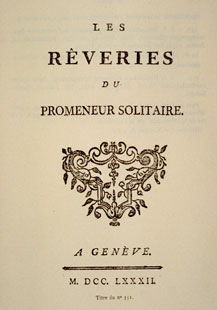
Above: The Reveries of the Solitary Walker, Jean-Jacques Rousseau (1782)
In this other universe, this other man won the prize.
The published essay became famous for its furious condemnation of progress.

Above: Discourse on the Arts and Sciences, Jean-Jacques Rousseau (1750)
(It was Rousseau’s first successfully published philosophical work, and it was the first expression of his influential views about nature vs. society, to which he would dedicate the rest of his intellectual life.
This work is considered one of his most important works.
Rousseau felt a sudden and overwhelming inspiration “that man is naturally good, and that it is from these institutions alone that men become wicked“.
Rousseau was able to retain only some of the thoughts, the “crowd of truths“, that flowed from that idea — these eventually found their way into his Discourses and his novel Émile.
The line with which Rousseau opens the discourse is a quote in Latin from Horace’s On the Art of Poetry:
“We are deceived by the appearance of right.“

Above: Bronze medallion depicting Roman poet Horace (65 – 8 BC)
According to Rousseau, the arts and sciences were accompanied by the corruption of morals.
Before civilization, humans lived “rustic but natural” lives untainted by the “perfidious veil of politeness“, and by “all those vicious ornaments” of fashion.
Using examples from Athens, Sparta, and Rome, Rousseau wrote that the arts and sciences sap humans of their virtue and ability to defend against invasion.
Rousseau argued that human civilization has become decadent as a result of their own cultural progress.
However, Rousseau did not provide a clear account of how cultural progress had led to this decline.
Rousseau was showing the “great principle that nature made man happy and good, but that society depraves him and makes him miserable.
Vice and error, foreign to his constitution, enter it from outside and insensibly change him.”
The character describes the Discourse on the Arts and Sciences as an effort “to destroy that magical illusion which gives us a stupid admiration for the instruments of our misfortunes and an attempt to correct that deceptive assessment that makes us honor pernicious talents and scorn useful virtues.
Throughout he makes us see the human race as better, wiser, and happier in its primitive constitution.
Blind, miserable and wicked to the degree that it moves away from it.
His goal is to rectify the error of our judgements in order to delay the progress of our vices, and to show us that where we seek glory and renown, we in fact find only error and miseries“.
Although he returns to the problem of materialism throughout his life, Rousseau does not ever discuss it at any length.
He chooses to write from the perspective of the ordinary course of things, and philosophical materialism breaks with the ordinary course of things.
It is what he early called one of those metaphysical subtleties that do not directly affect the happiness of mankind.

I think Rousseau’s opinions would remain unchanged if he had considered the 21st century’s technological “progress“.
The multiplication of technologies in the name of efficiency is actually eradicating free time by making it possible to maximize the time and place for production and minimize the unstructured travel time in between.
New timesaving technologies make most workers more productive, not more free, in a world that seems to be accelerating around them.
The rheotric of efficiency around these technologies suggests that what cannot be quantified cannot be valued – that the vast array of pleasures which fall into the category of doing nothing in particular, of woolgathering, cloud-gazing, wandering, window shopping, are nothing but voids to be filled by something more definite, more productive, faster paced.
The indeterminacy of a ramble, on which much more may be discovered, is being replaced by the determinate shortest distance to be traversed with all possible speed as well as by the electronic transmissions that make real travel less necessary.
Technology has its uses, but its false urgency, the call to speed, the insistence that travel is less important than arrival, robs us of the real education of our senses and imagination that a walk provides.
Walking is the emblem of the simple man.
A solitary and rural walk is a means of being in nature and outside society.
The walker has the detachment of the traveller, but travels unadorned and unaugmented, dependent on his own bodily strength rather than on conveniences that can be made and bought.

Oh, it’s a mystery to me
We have a greed, with which we have agreed
And you think you have to want more than you need
Until you have it all you won’t be free
Society, you’re a crazy breed
I hope you’re not lonely without me
When you want more than you have
You think you need
And when you think more than you want
Your thoughts begin to bleed
I think I need to find a bigger place
‘Cause when you have more than you think
You need more space
Society, you’re a crazy breed
I hope you’re not lonely without me
Society, crazy indeed
I hope you’re not lonely without me
There’s those thinking, more or less, less is more
But if less is more, how you keeping score?
Means for every point you make, your level drops
Kinda like you’re starting from the top
You can’t do that
Society, you’re a crazy breed
I hope you’re not lonely without me
Society, crazy indeed
I hope you’re not lonely without me
Society, have mercy on me
I hope you’re not angry if I disagree
Society, crazy indeed
I hope you’re not lonely
Without me

Above: Eddie Vedder
A man is a curious thing.
In the first years of life man is never free.
He is hemmed in by adult rules and, having no experience of social conduct to guide him, he is entirely dependent on them.
As a result he develops an acute desire for freedom and feels a desperate need to escape from his prison at the first opportunity.
Once a human being is free, it will be quite happy with its freedom and try to retain it.
At first, a man welcomes his newfound freedom with a sense of relief, drunk with the vision and perspective of Life before him, but the moment he puts this freedom to the test, as soon as he wants to commit a given act which might send him in a given direction, he gets scared.
Since he is capable of abstract thought, he knows that each of his acts has a series of possible consequences, not all of which can be predicted.
If he decides to act of his own free will, the responsibility will be his alone.
At that moment, man would be delighted to cease all activity, but, because he is a man and it is man’s destiny to act, he begins to long for the rules of his childhood, to long for someone who will tell him what to do, to give meaning to his now meaningless actions.
These actions are meaningless because they serve his comfort, but what does he serve?
At this point he will search for a new deity.
Because a man is accustomed from infancy to have women around, to find their presence “normal“, their absence “abnormal“, tends to make him dependent on women in later life.
But a life without women is nothing more than a change of scenery, comparable to someone who was born in the mountains moving to the prairies.
Although he might long for his mountain home, other things become important in his life.
Too many men judge their own value by woman’s estimation of his usefulness to her.
Woman becomes a kind of value scale where praise from her equals confidence in himself.
It is rare for a man to conquer his addiction to praise.
The risk of attempting to be his own measure of his own success is too great for him to take.

Sometimes a man shouldn’t follow his woman.
Sometimes a man should go his own way.
Sometimes it is easier to leave than to stay and love.
Sometimes a man needs to trust himself and do what he wants.
Do what he will and then deal with her reactions.
The result may be unpleasant but it will be revelatory and true.
Asking to be allowed to be happy will always be a losing proposition, for ultimately she will inevitably, invariably choose her self-interest over his.
If his actions are folly then he will – it is hoped – learn from the consequences of his actions.
Let her do her and let him do what gives him happiness.
I am not suggesting that there isn’t room for compromise, but far too often it seems that it is the man who is compelled to capitulate to satisfy the woman.

My knee aches and needs a break.
My mind aches and seeks solace in separation.

“I went to my medical man.
He is an old chum of mine and feels my pulse, looks at my tongue and talks about the weather.
All for nothing.
When I fancy I am ill, so I thought I would do him a good turn by going to him now.
“What a doctor wants is practice.
He shall have me.
He will get more practice out of me than out of 1,700 of your ordinary commonplace patients, with only one or two diseases each.“
So I went straight up and saw him.
And he said:
“Well, what’s the matter with you?“
I said:
“I will not take up your time, dear boy, with telling you what is the matter with me.
Life is brief and you might pass away before I had finished, but I will tell you what is not the matter with me.
I have not got housemaid’s knee.
Why I haven’t got housemaid’s knee, I cannot tell you, but the fact remains that I have not got it.
Everything else, however, I have got.“
And I told him how I came to discover it all.
Then he opened me and looked down me, clutched hold of my wrist and then he hit me over the chest when I wasn’t expecting it – a cowardly thing to do, I call it – and immediately afterwards butted me with the side of his head.
After that he sat down and wrote down a prescription, folded it up and gave it to me.
I put it in my pocket and walked out.
I did not open it.
I took it to the nearest chemist’s and handed it in.
The man read it and handed it back.
He said he didn’t keep it.
I said:
“You are a chemist?”
He said:
“I am a chemist.
If I was a co-operative store and family hotel combined, I might be able to oblige you.
Being only a chemist hampers me.“
I read the prescription.
It ran:
“One pound of beefsteak with one pint of bitter beer every six hours.
One ten-mile walk every morning.
One bed at 11 sharp every night.
And don’t stuff up your head with things you don’t understand.“
I followed the directions with the happy result – speaking for myself – that my life was preserved and is still going on.“

A great prescription and one I can understand.
A ten-mile walk would take me, on a good day, about 3.5 hours to accomplish.
Do I have the time to spare?
Here’s the thing.
If something is important to you, you will find the time, you will find a way.
If it isn’t, you will find an excuse.
Lately, I have found too many excuses to be lazy.

The new millennium arrived as a dialetic between secrecy and openness, between consolidation and dispersal of power, between privatization and public ownership, between power and Life.
Walking has as ever been on the side of the latter.
Insidious forces are marshalled against the time, space and will to walk and against the version of humanity that act embodies.
One force is the filling-up of “the time in-between“, the time of walking to or from a place, of meandering, of running errands.
That time has been deplored as a waste, reduced, and its remainder filled with earphones playing music and mobile phones relaying conversations.
The very ability to appreciate this uncluttered time, the uses of the useless, often seems to be evaporating as does appreciation of being outside – including outside the familiar.
Mobile phone conversations seem to serve as a buffer against solitude, silence and encounters with the unknown.
Obesity and its related health crises seem to be becoming more and more of a transnational pandemic as people in more parts of the world become immobilized and overfed from childhood on.
A downward spiral where the inactive body becomes less and less capable of action.
That obesity is not just circumstantial – due to a world of digital amusements and parking lots, of sprawl and suburbs – but conceptual in origin, as people forget that their bodies could be adequate to the challenges that face them and a pleasure to use.
They perceive and imagine their bodies as essentially passive, a treasure or a burden, but not a tool for work and travel.
The fight against this collapse of imagination and engagement may be as important as the battles for political freedom, because only by recuperating a sense of inherent power can we begin to resist both oppression and the erosion of the vital in action.
Men need to listen to both their bodies and their minds.
Most industrial zone humans need to rethink time, space and their own bodies before they will be equipped to be as urbane and pedestrian (and non-technological) as their predecessors.
We need to relearn how to integrate public transit and our own legs into an effective, ethical and deeply pleasurable way of navigating the terrain of our daily lives.
While walking, the body and the mind can work together, so that thinking becomes almost a physical rhythmic act.
Spirituality and sexuality both enter in.
The great walkers move through both urban and rural places in the same way.
Past and present are brought together when you walk as the ancients did or relive some event in history or your own life by retracing its route.
Each walk moves through space like a thread through fabric, sewing it together into a continuous experience – so unlike the way air travel and cars and trains chop up time and space.
This experience of continuity has been lost in the industrial age.
But we can choose to reclaim it.
Again and again.
And some do.
The fields and streets are waiting.

I sit at the terrace table and think.
It is raining heavier now and I worry a bit about whether my bride’s attire is adequate protection.
But she made her choice to walk a tiny portion of El Torcal as I made the choice not to.
She returns soggy and sodden but happy and tired.
I scurry to get her a hot beverage and implore her to pause a while before dashing back to the car and hurtling ourselves back on the highway.
For once, she listens.
Her clothes are wet, but her spirit is undampened.
She speaks of traces of mountain goats upon lumps of limestones.
She tells a tale of haste and caution, of a desire to both linger and flee from the rainstorm that cascaded upon her.

Above: El Torcal de Antequera
I wonder, without speaking my thoughts aloud, whether she allowed herself, if she let herself, to become totally immersed in the experience of the moment on the mountain slopes.
Or did she distract herself with her phone and earpieces?
I say nothing.
She can be critical, but responds aggressively to criticism.
And, at least, today, she was actively clambering a crest while I cowered in comfort in the shelter from the rain.
Nonetheless, I console myself that I wisely gave myself a moment for myself.
I meandered through a gift shop with no one impatiently fretting how much of “our” finances I might be spending on frivolous inconsequentials, buying books I might not read and magnets I have no room to display.
I unabashedly consumed the unhealthy without shame or regret, without remorse or wisdom, without counting calories or conscience.
Part of me envies her solo adventure.
Part of me does not.
In the rain, animals seek shelter.
Only foolish humans tromp and splash about and consider ourselves superior.
My wife may have seen lilies, peonies, wild rose trees and orchids.
But beyond fecal traces or fading trails she would not have seen the Montpellier snake or the ocellated lizard, the Griffon vulture or the Spanish ibex, and certainly no nocturnal mammals such as badgers, weasels and rodents.
All she would have experienced would have been the splendor of flowers, the aroma of rain, the cold kiss of water, the solidity of stone beneath her boots, the drumbeat of nature upon her head and flowing through her veins.

Above: El Torcal de Antequera
Women can be wiser than men at times.
Yet sometimes men need to allow their folly its freedom.
We both made our choices and act satisfied with them.
We both gained a kind of perspective.
It is a pleasant fiction, is it not?

Above: Lucilla (Connie Nielsen) and Marcus Aurelius (Richard Harris), Gladiator (2000)
Sources
Ella Berthoud and Susan Elderkin, The Novel Cure
Alice Thomas Ellis, The Skeleton in the Cupboard
Jane Gardam, Old Filth
Jerome K. Jerome, Three Men in a Boat
Diogenes Laertius, Lives and Opinions of Eminent Philosophers
Murray MacLaughlin, “Try Walkin’ Away“
Kenny Rogers, “Just Dropped In to See What Condition My Condition Was In“
Rebecca Solnit, Wanderlust
Eddie Vedder, “Society“
Esther Vilar, The Manipulated Man